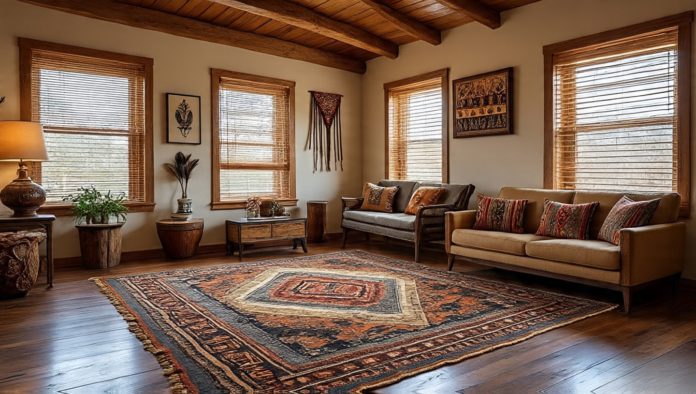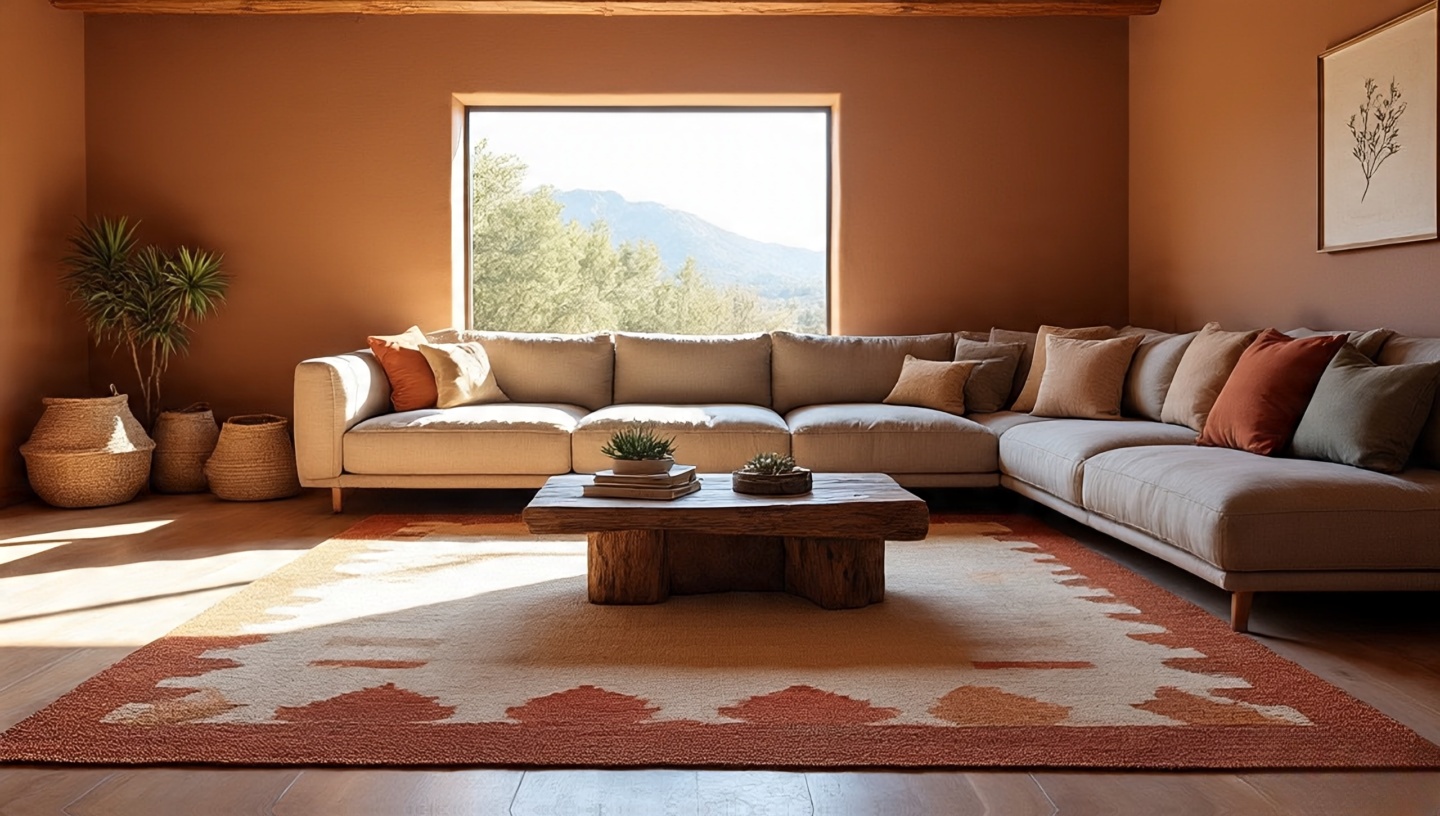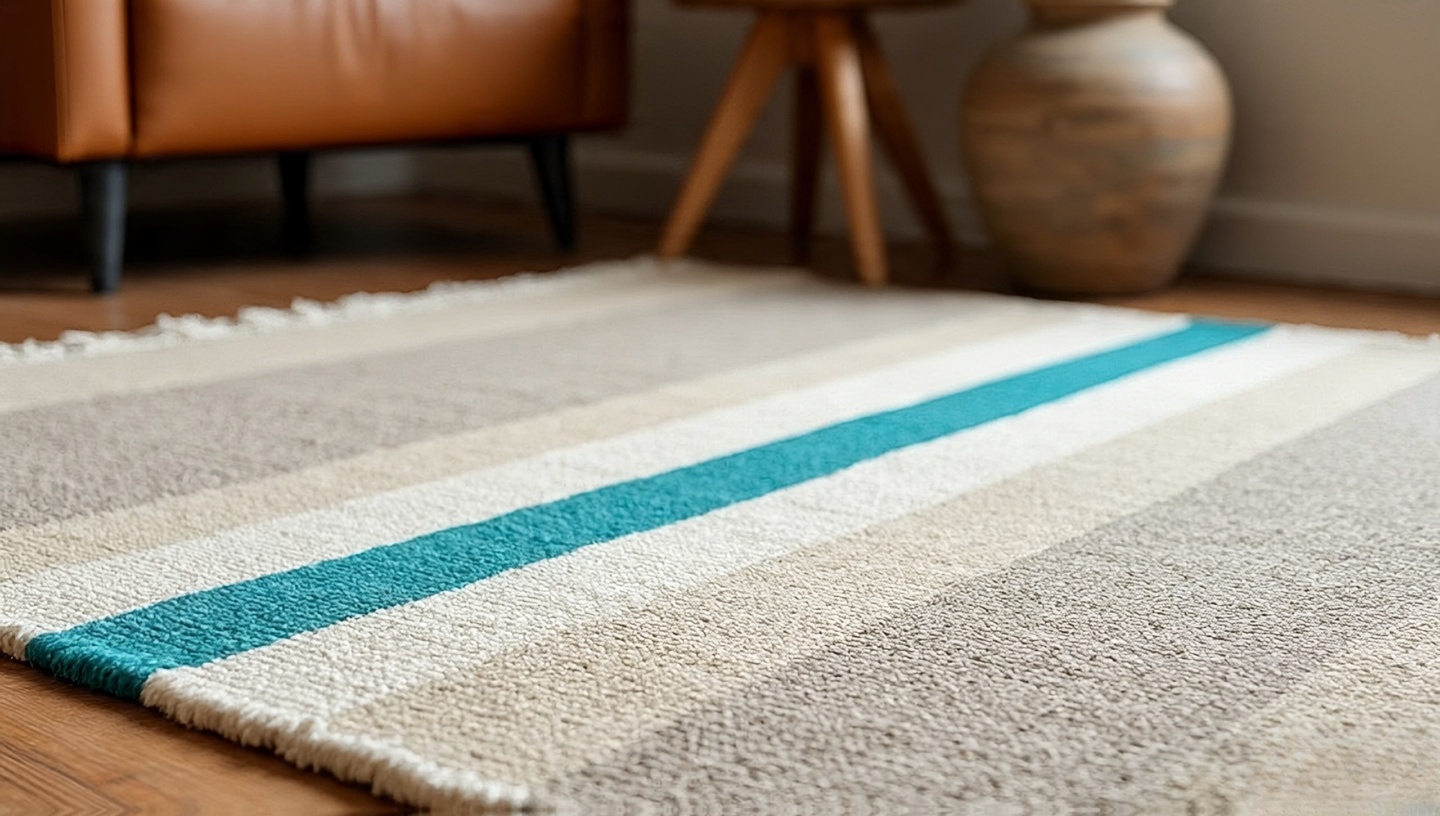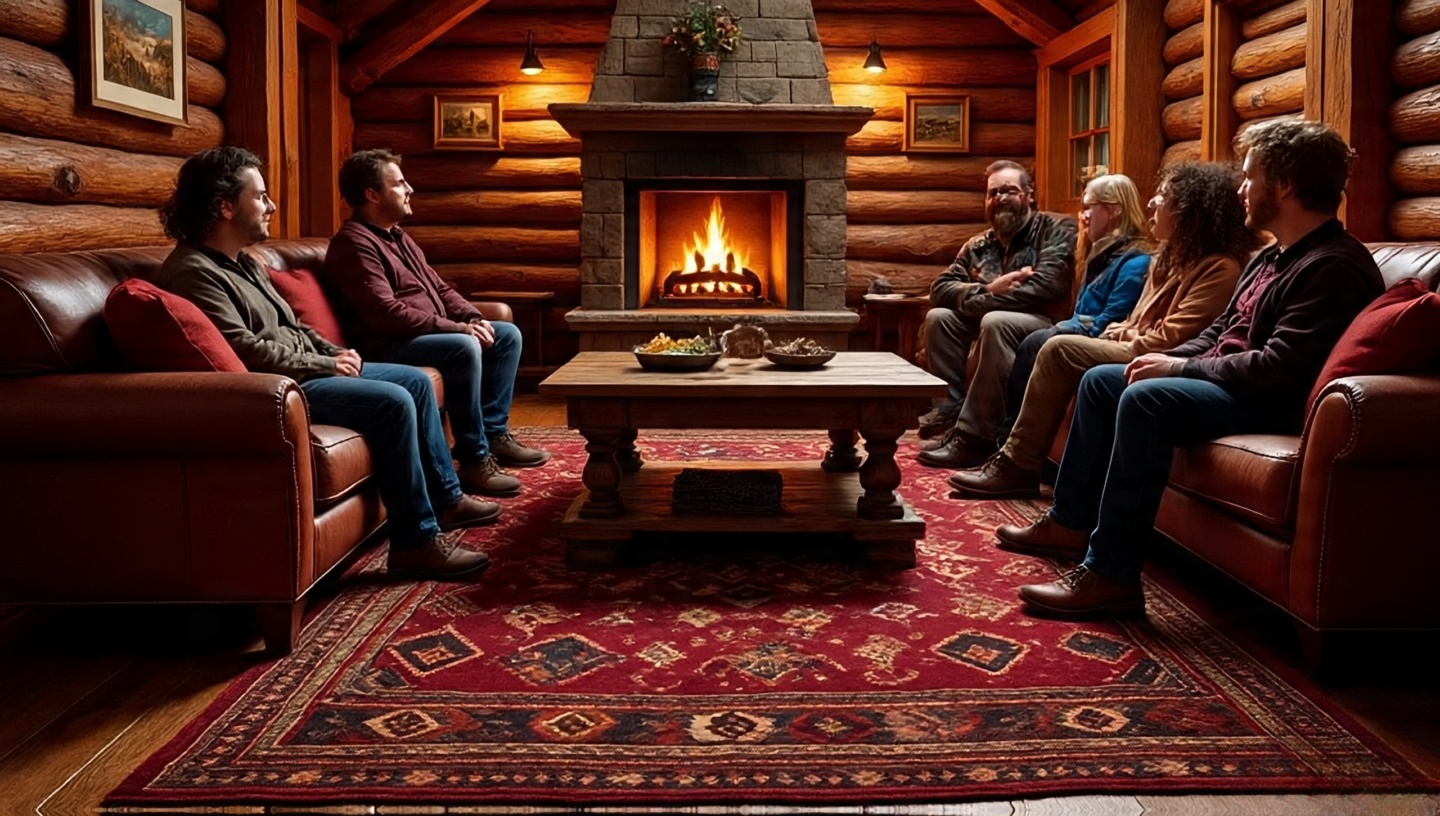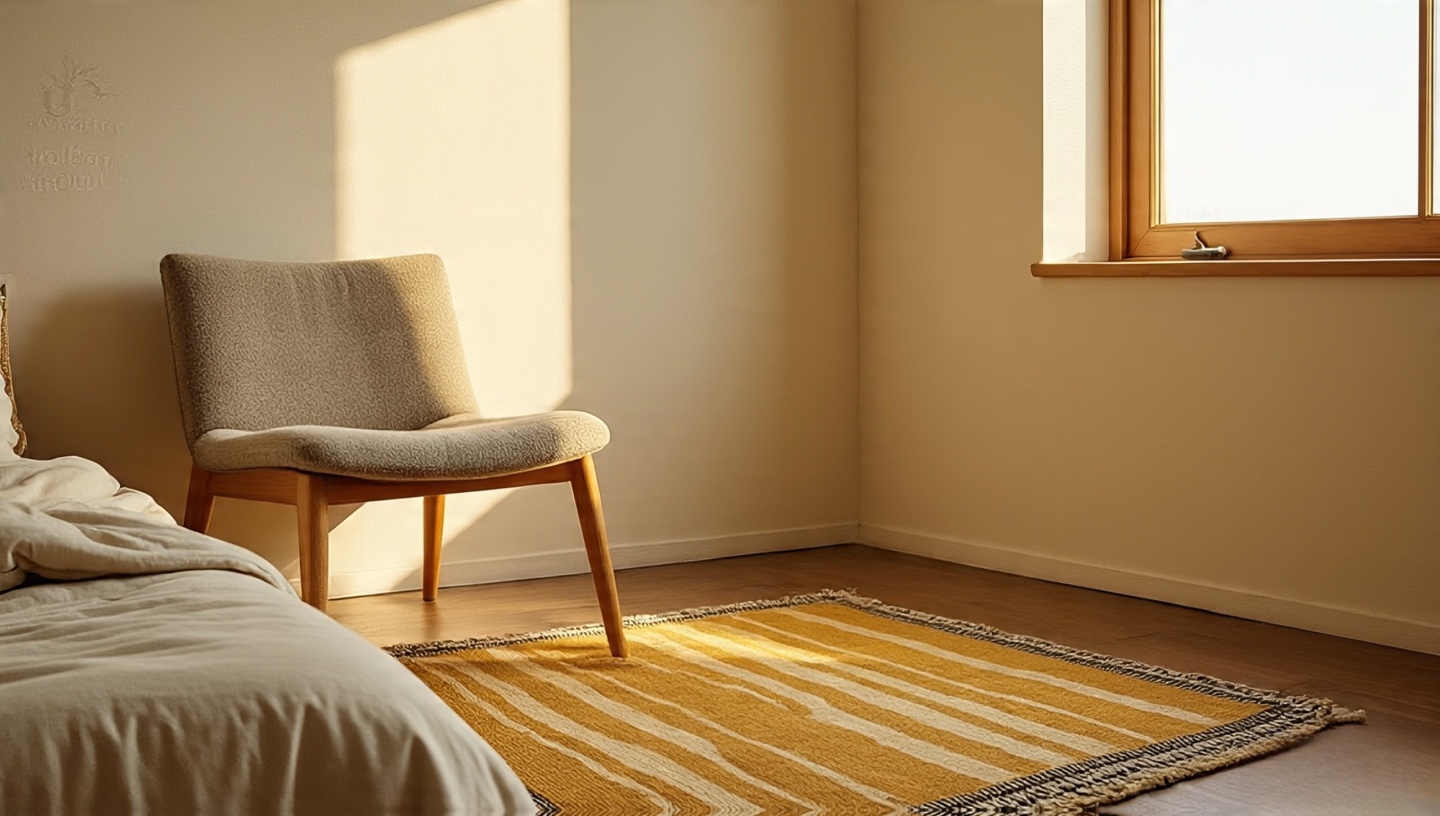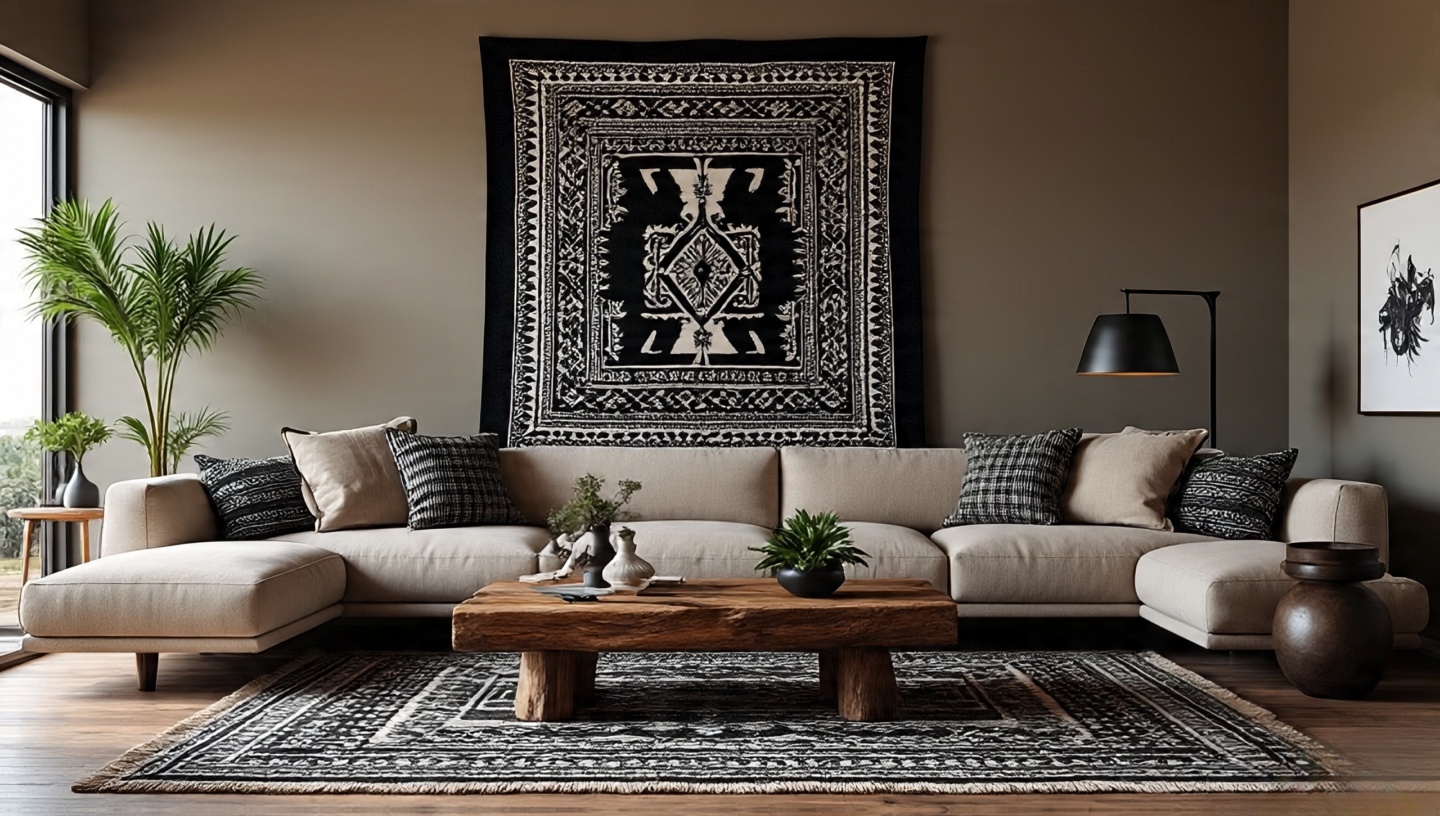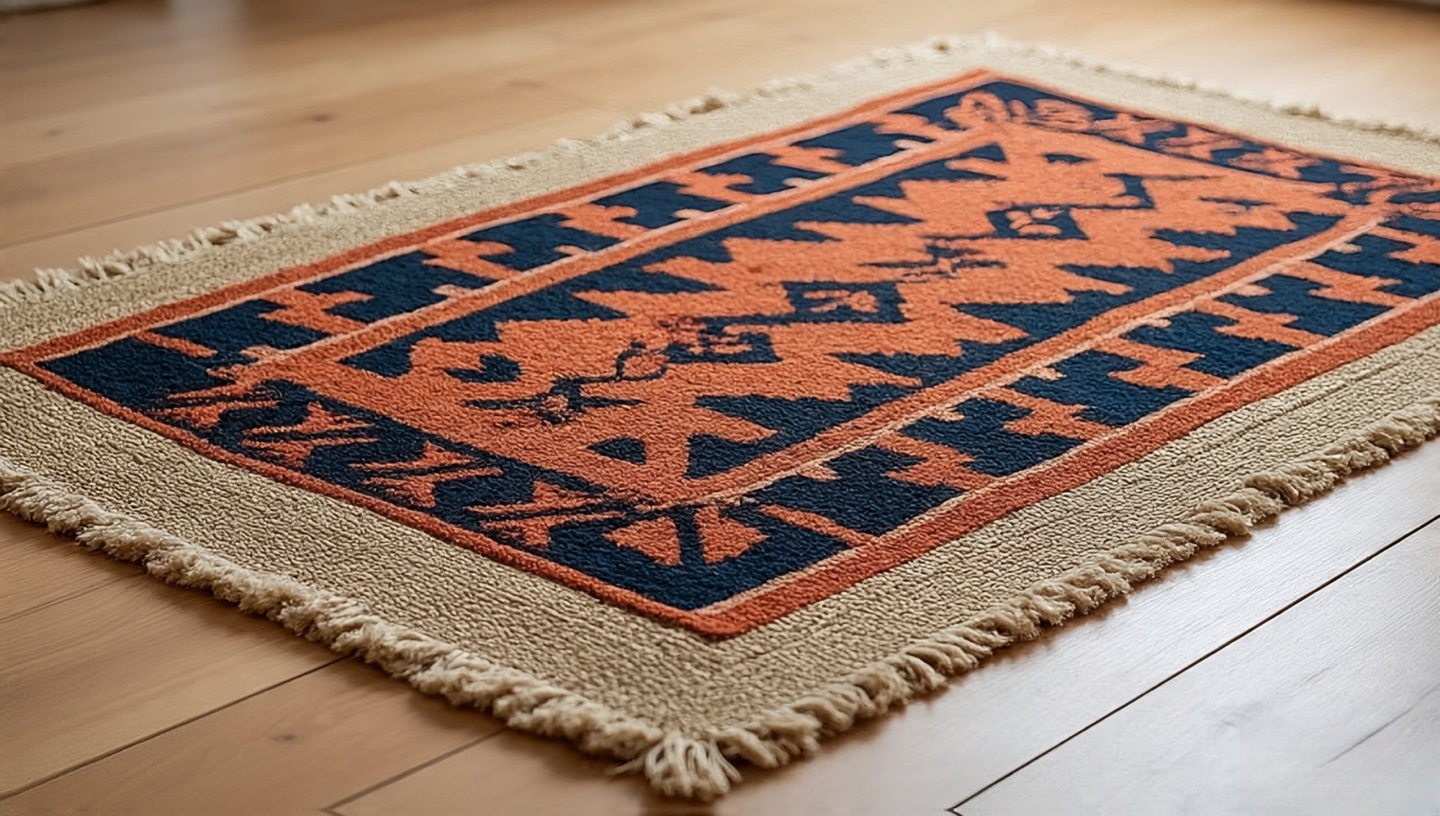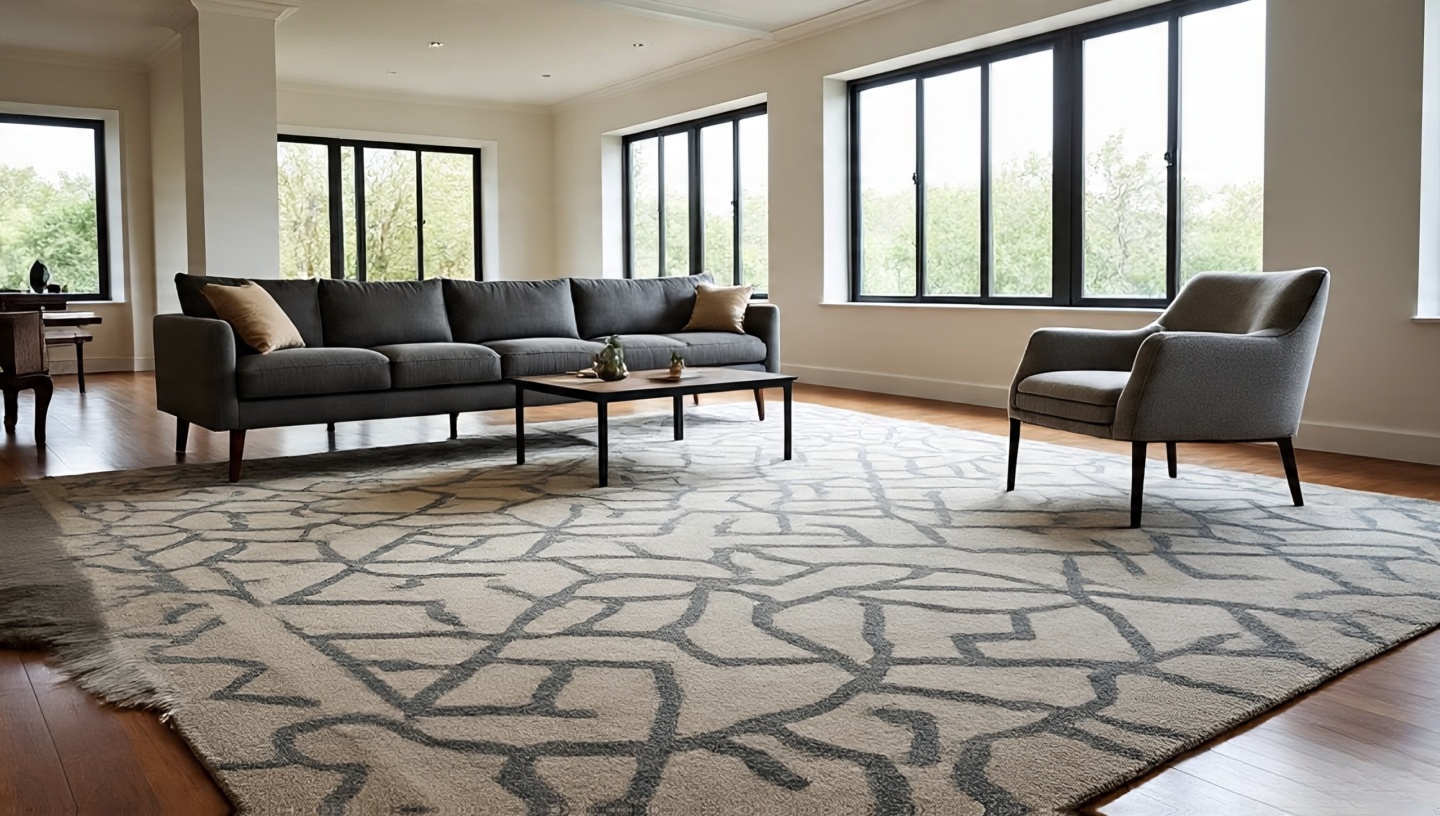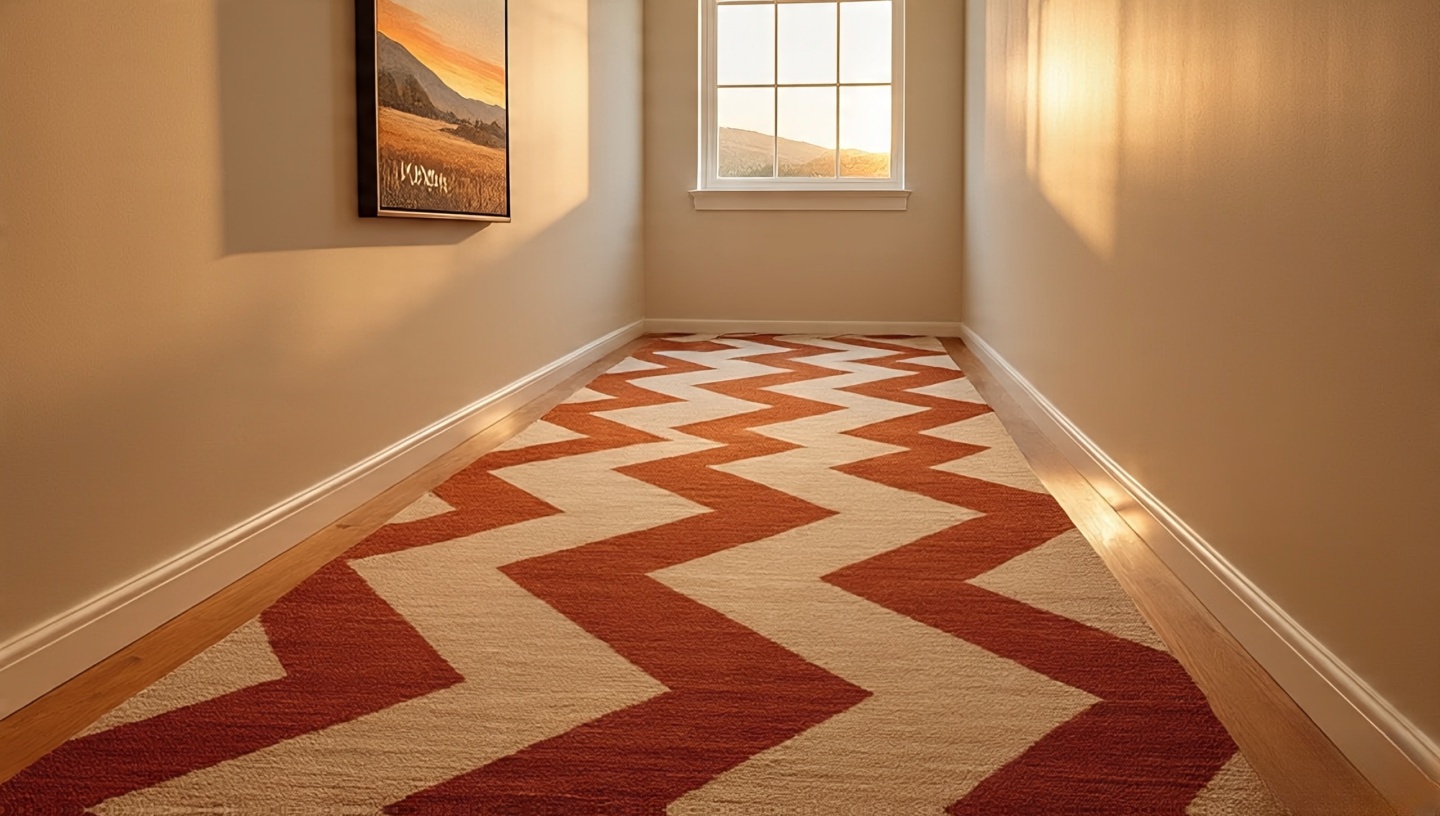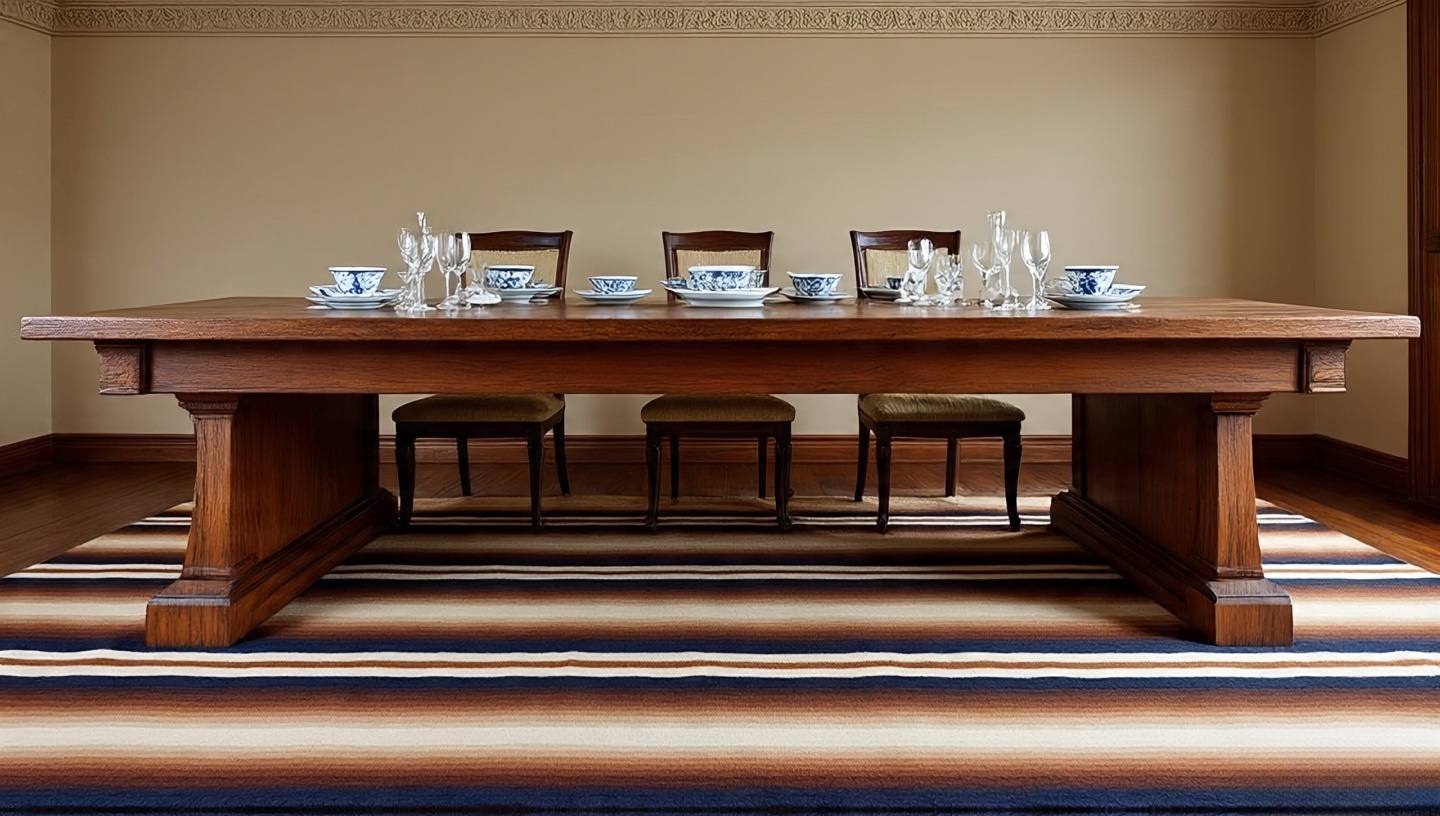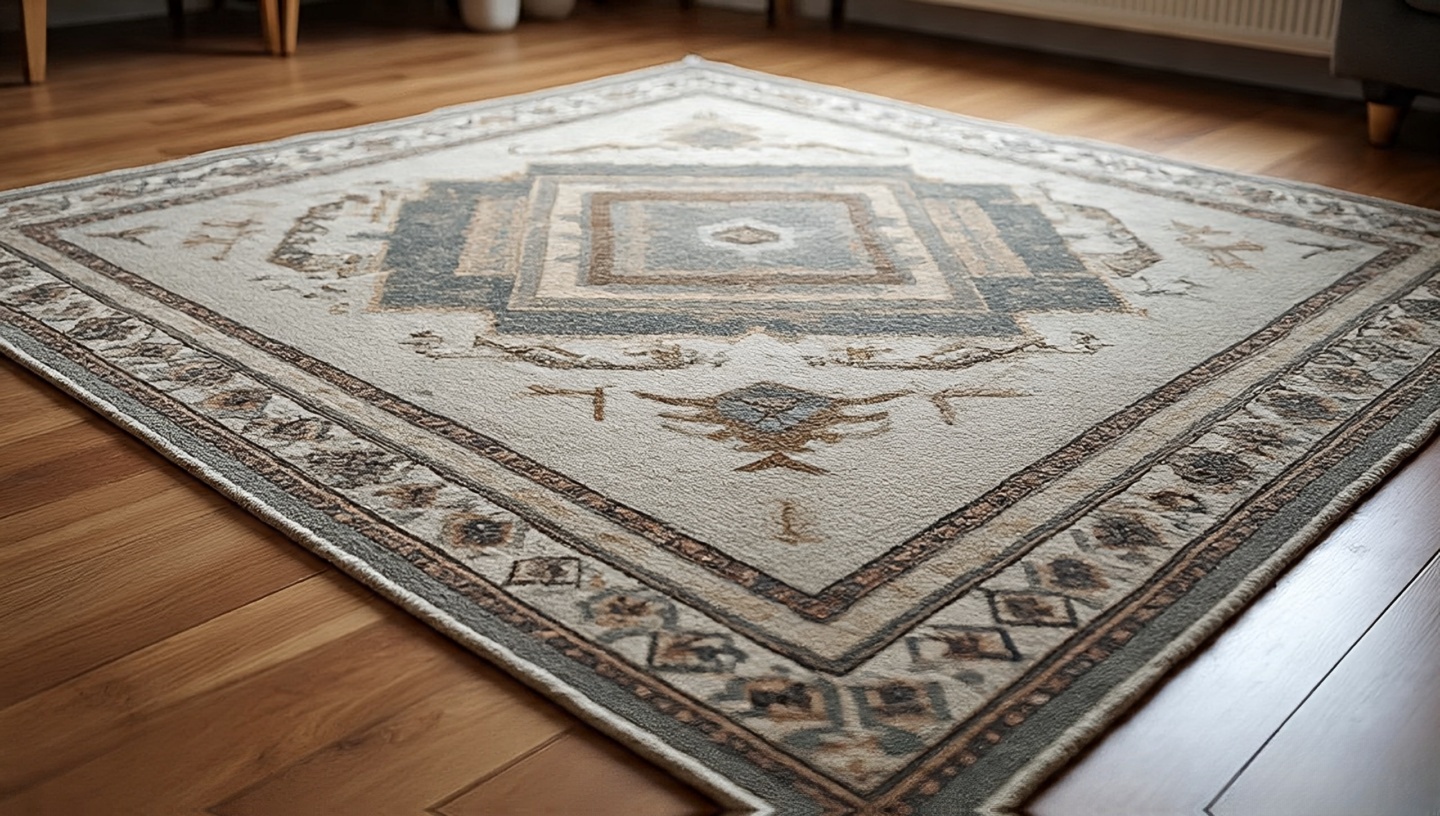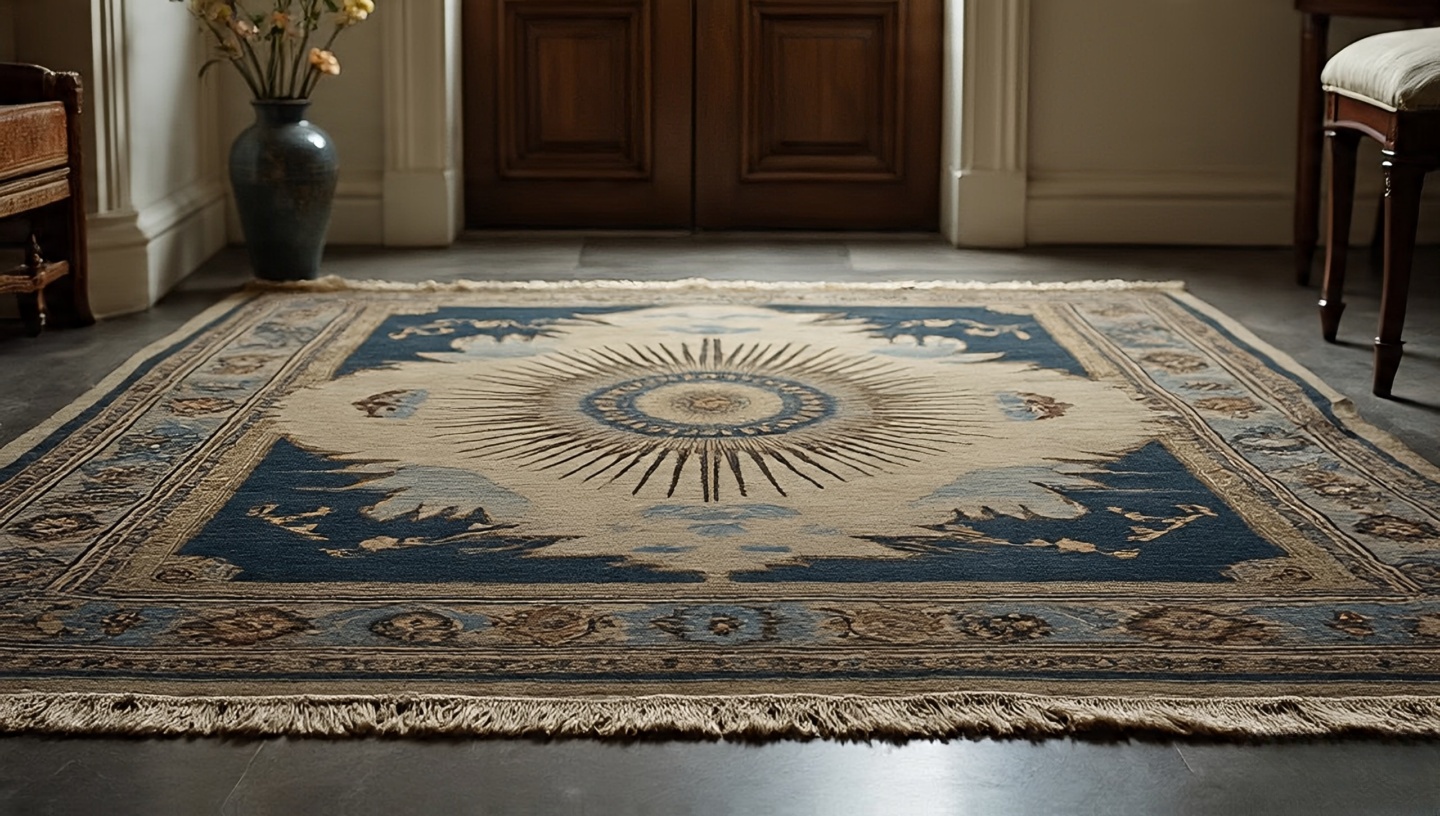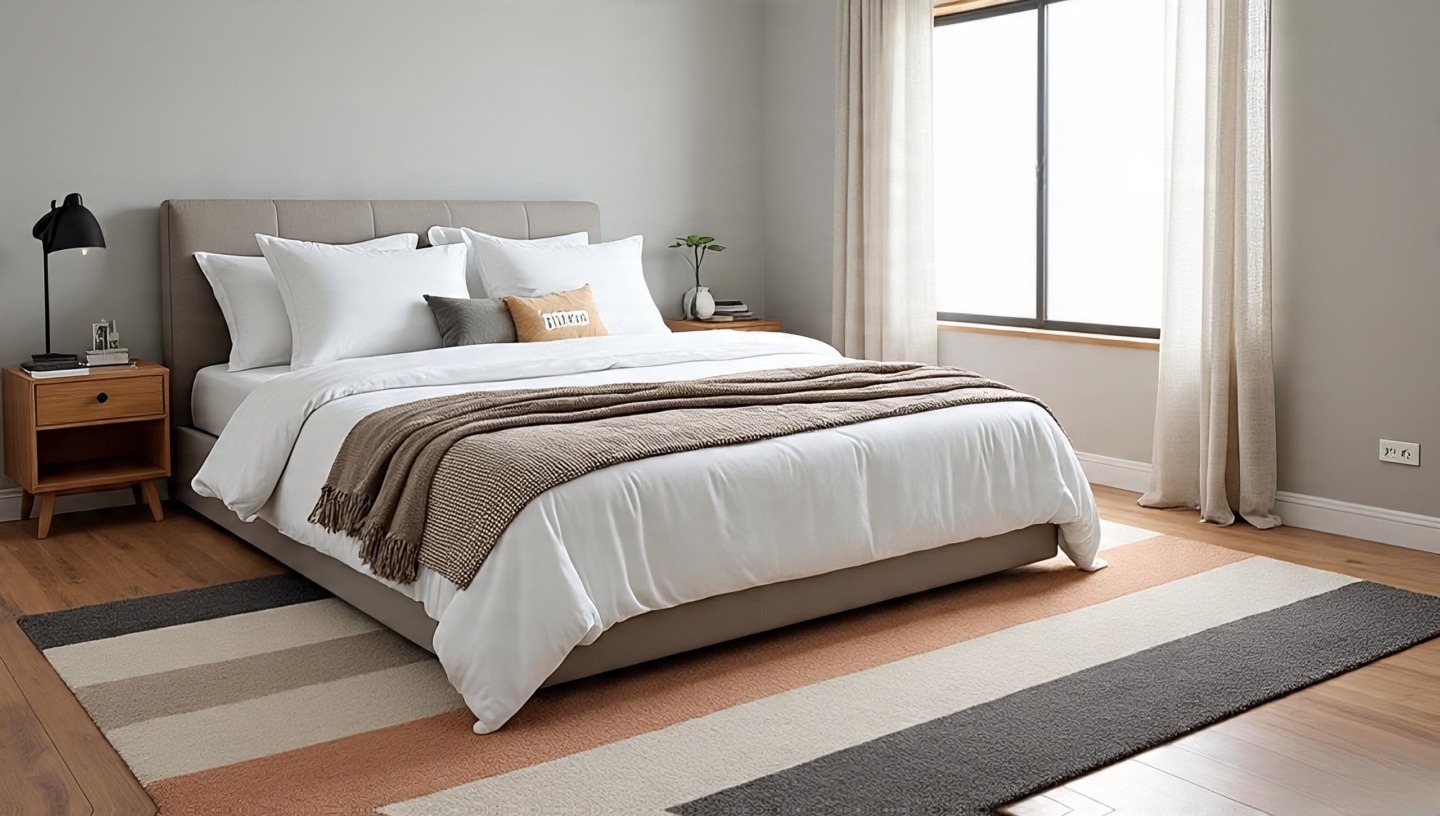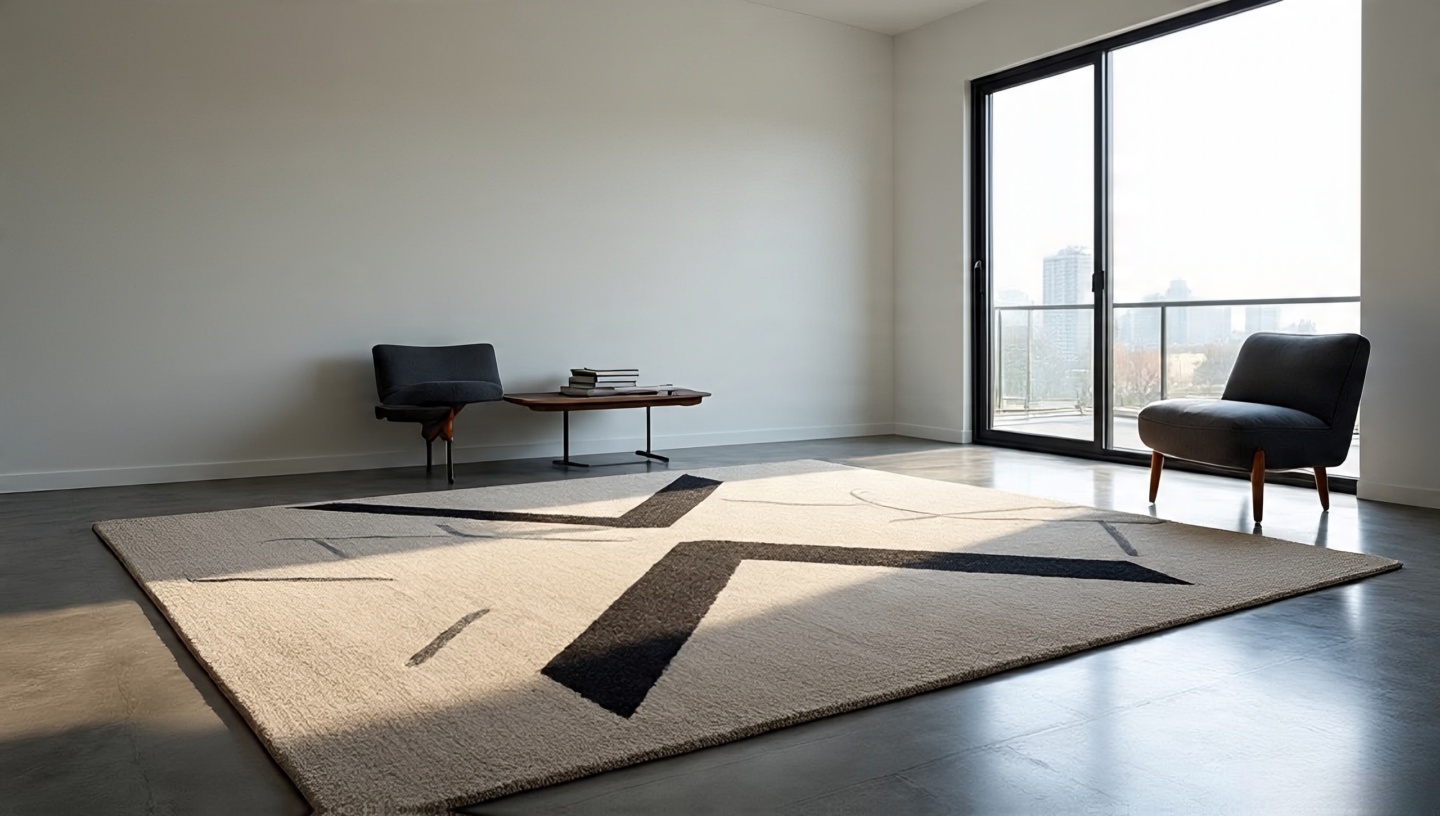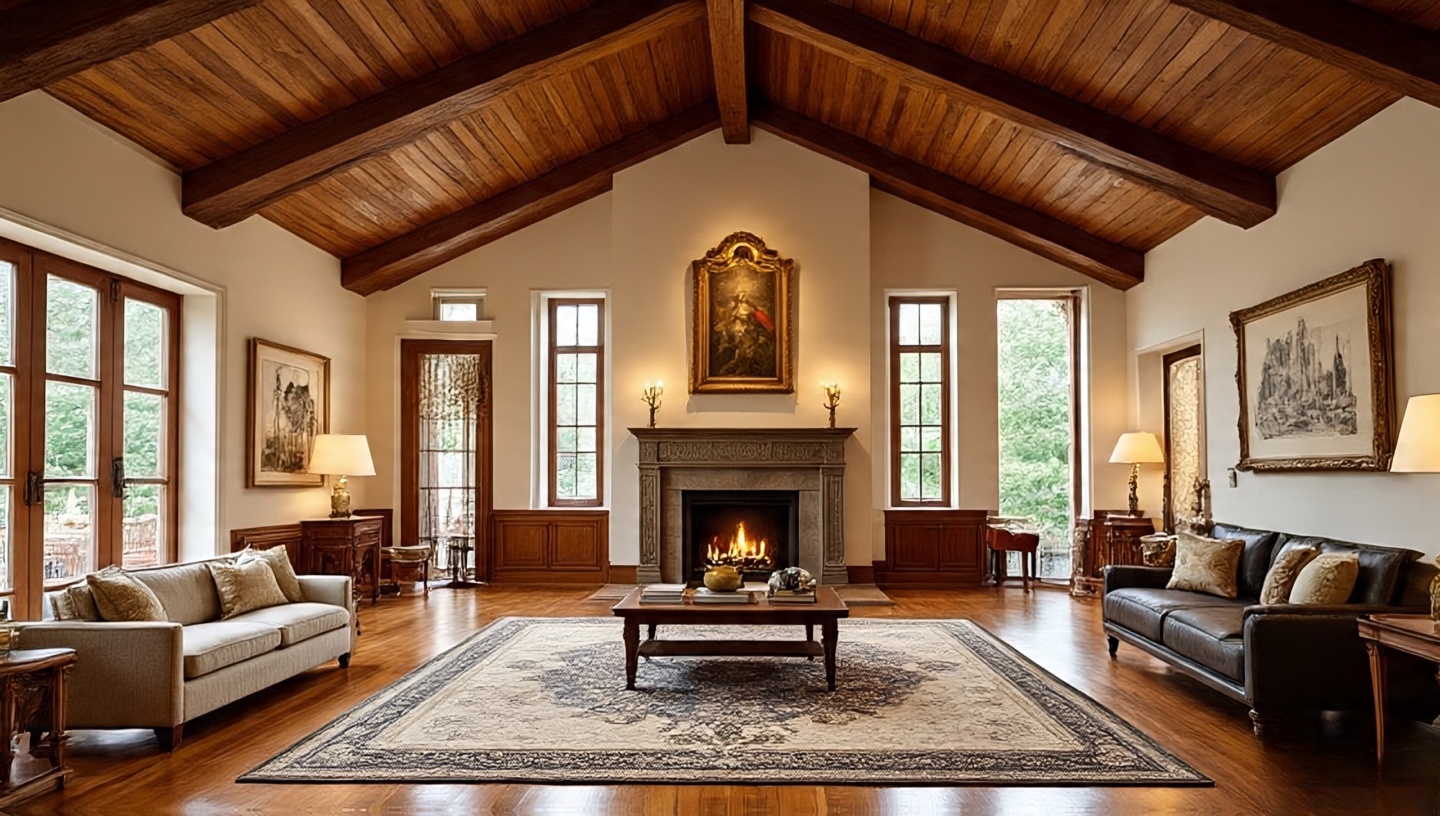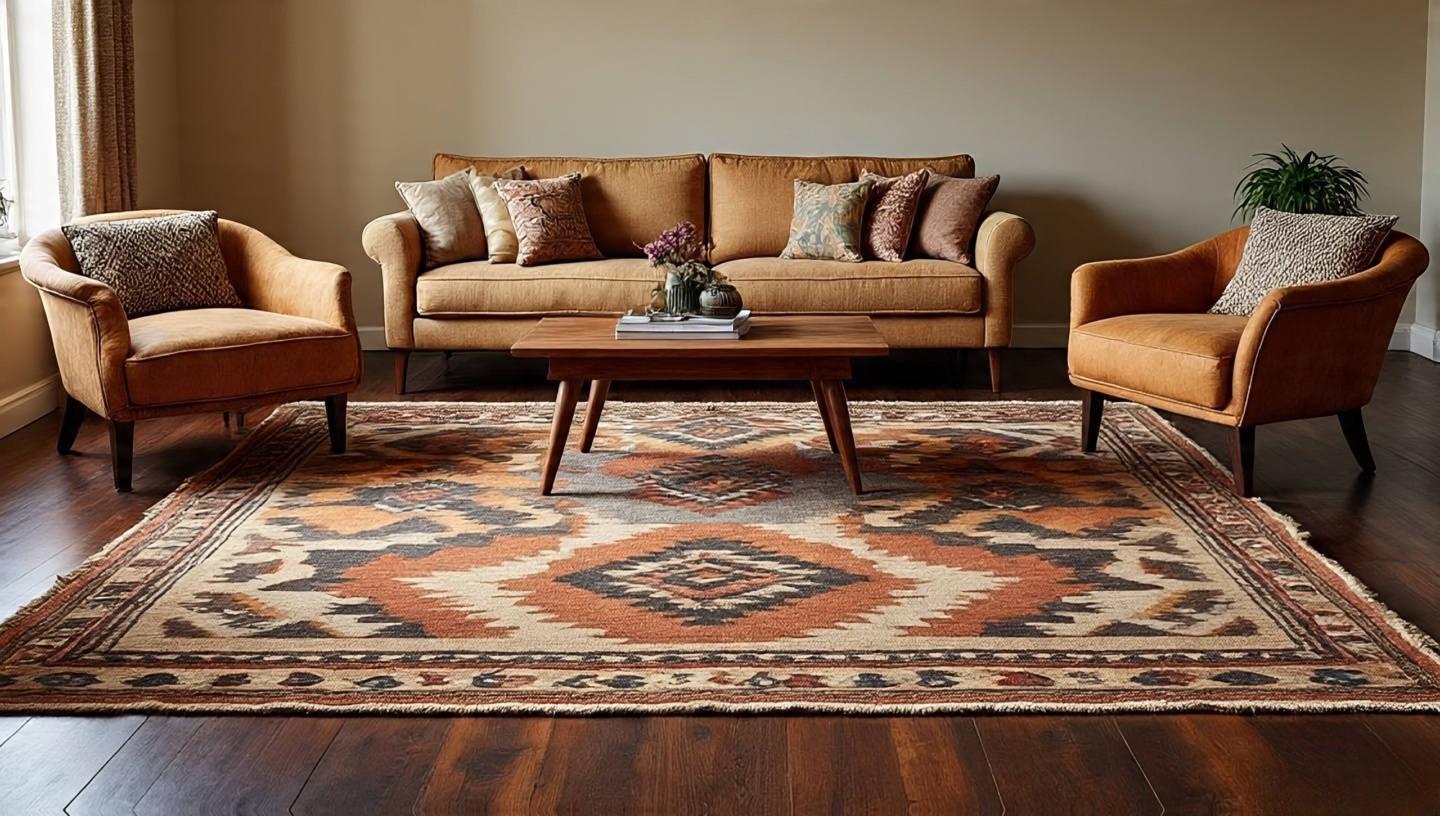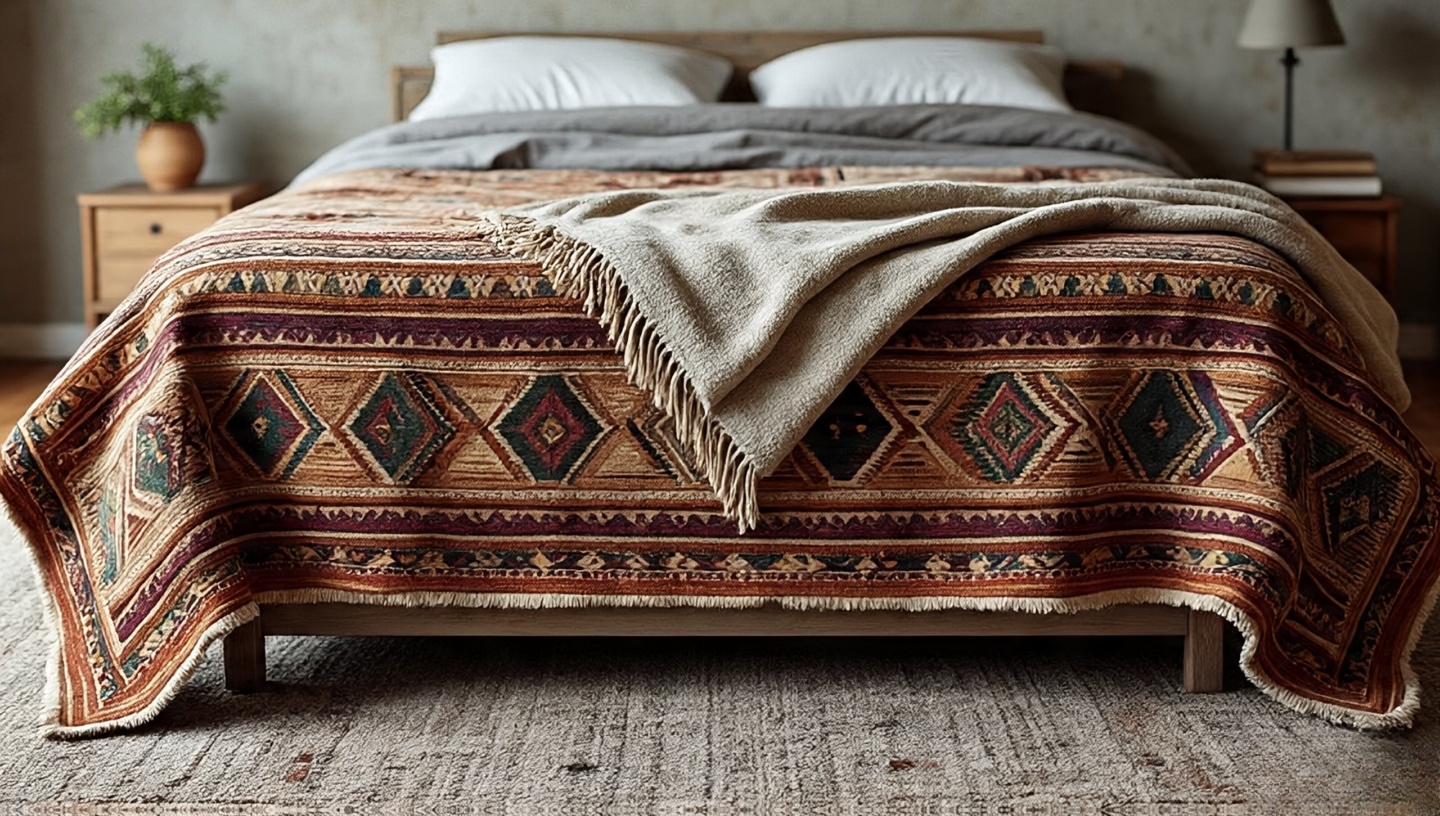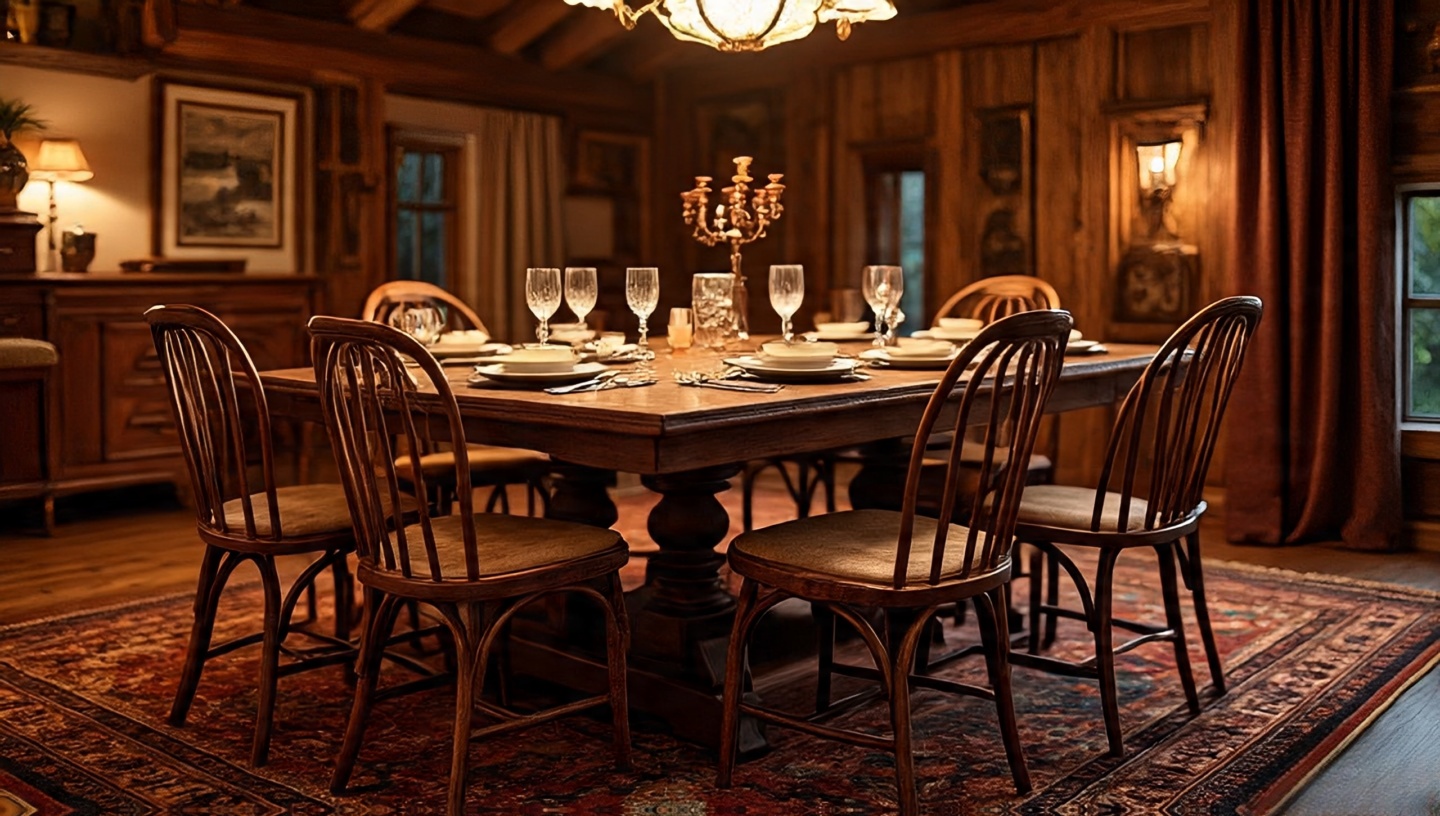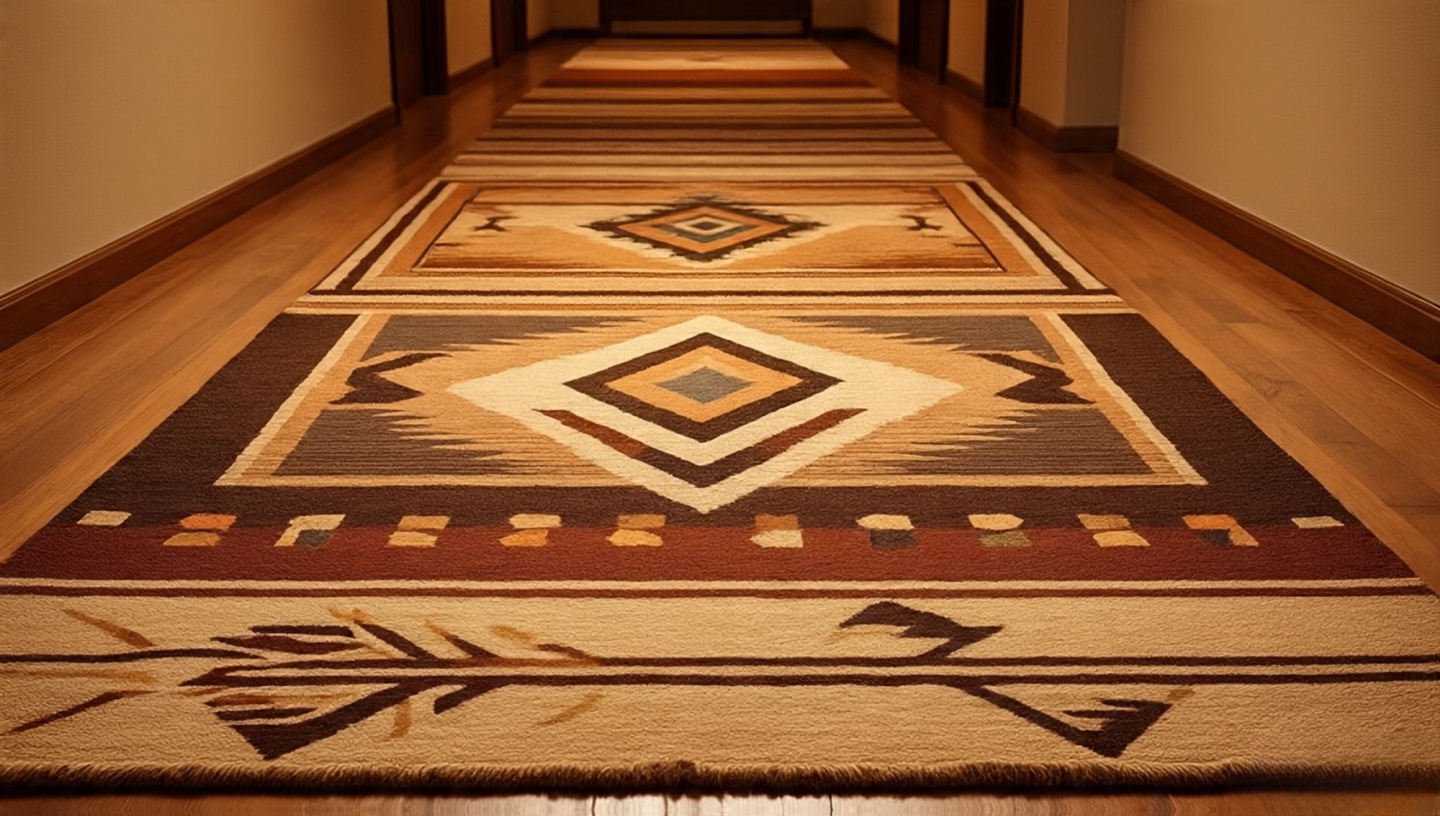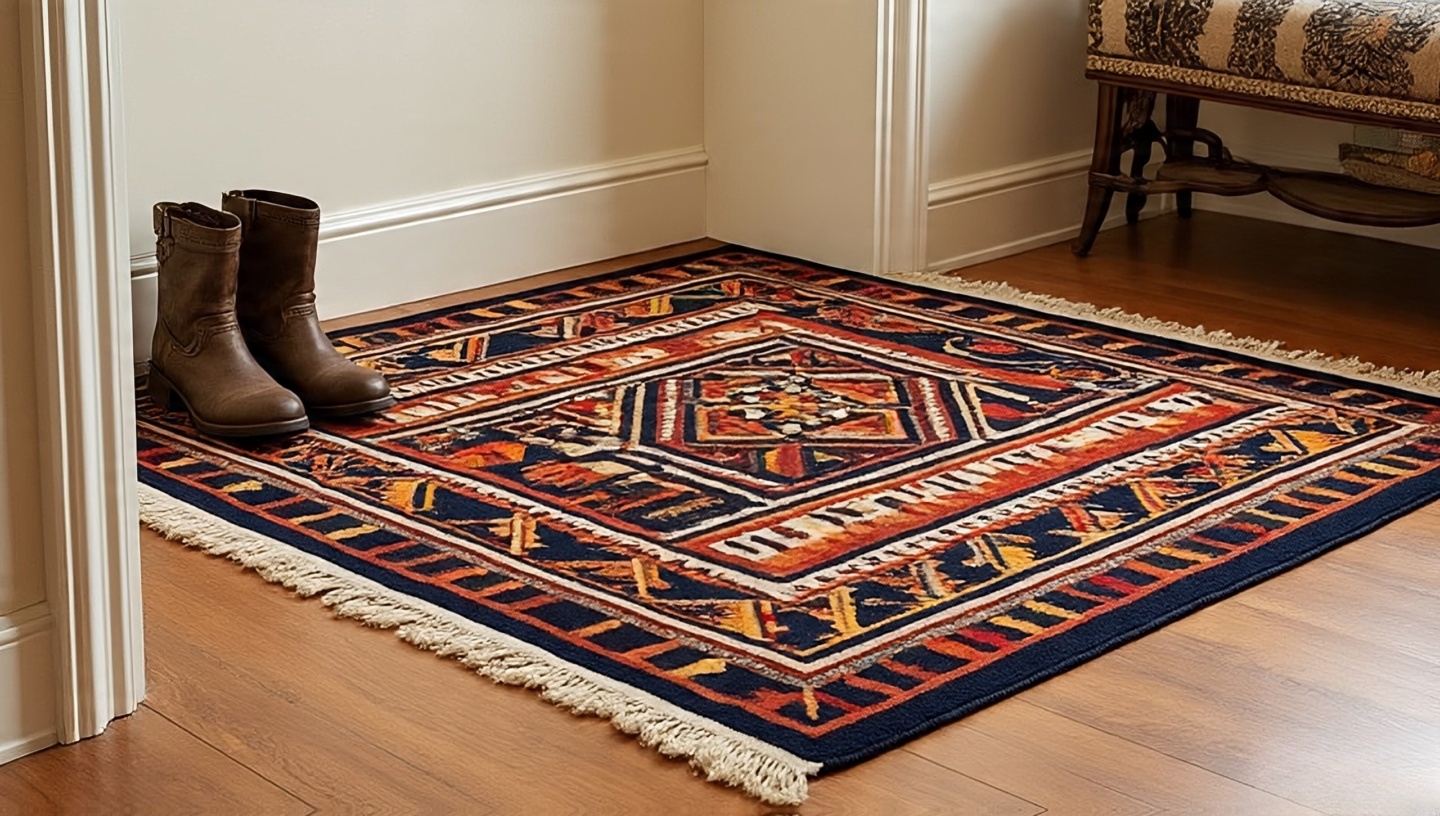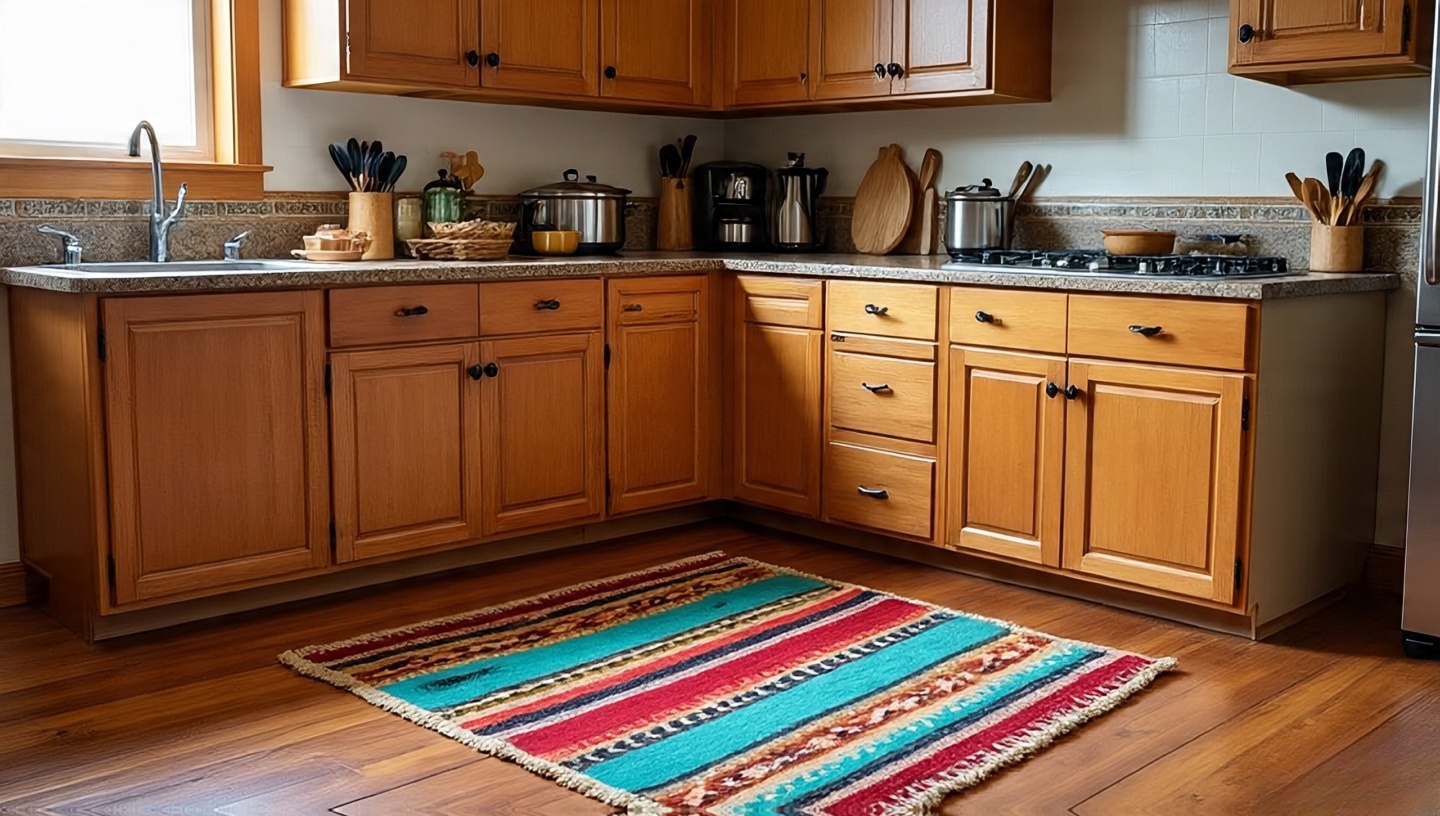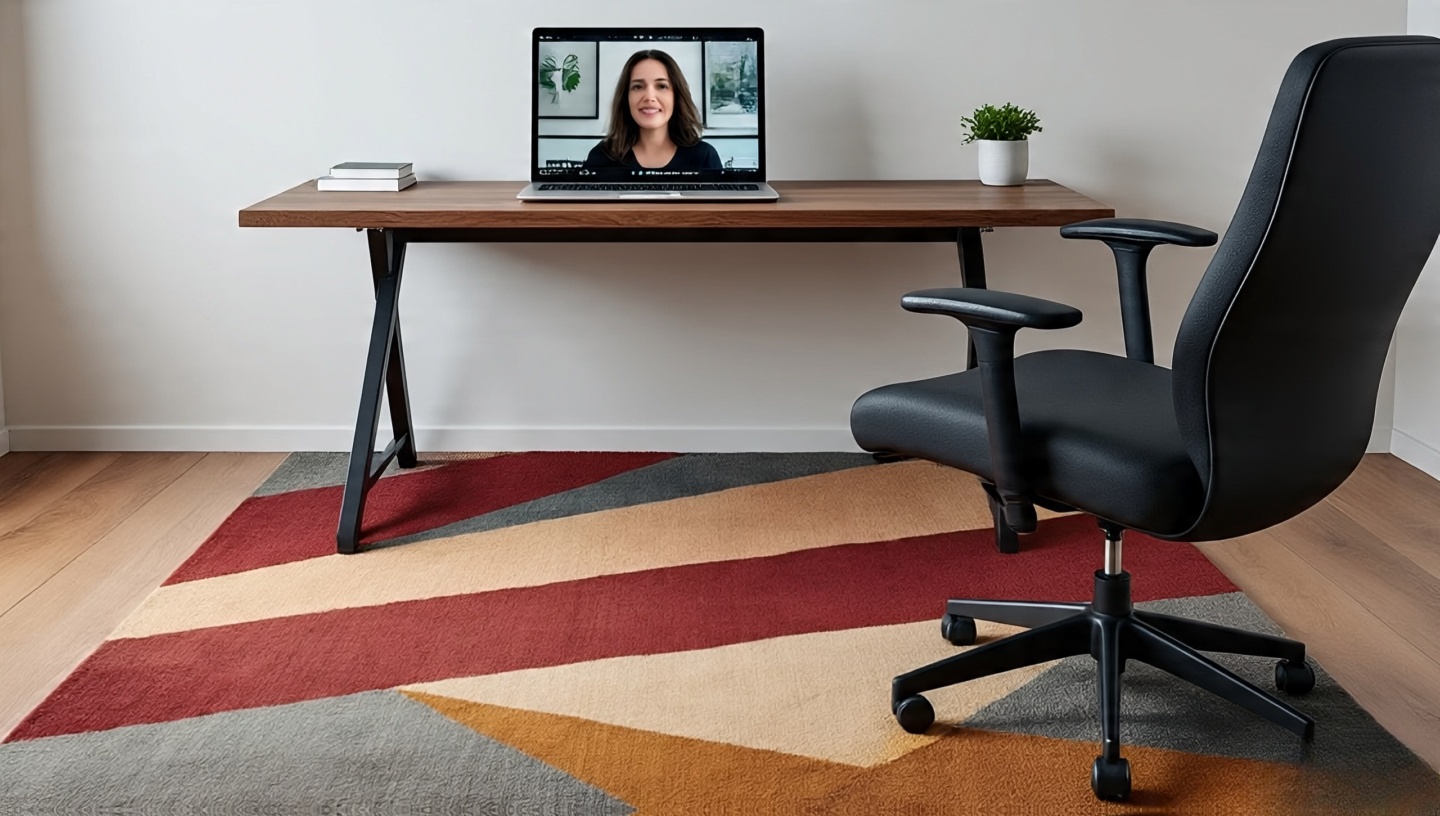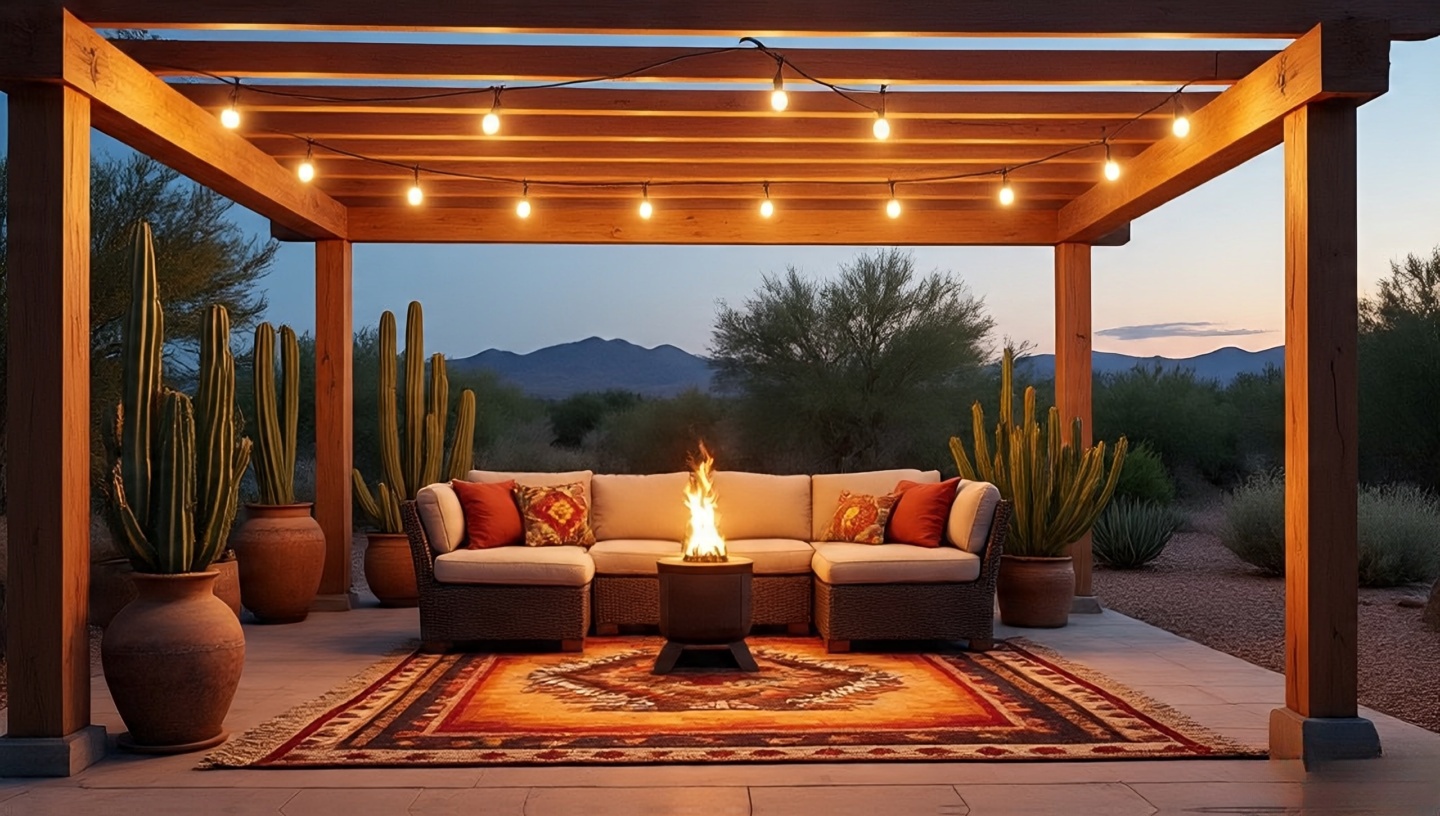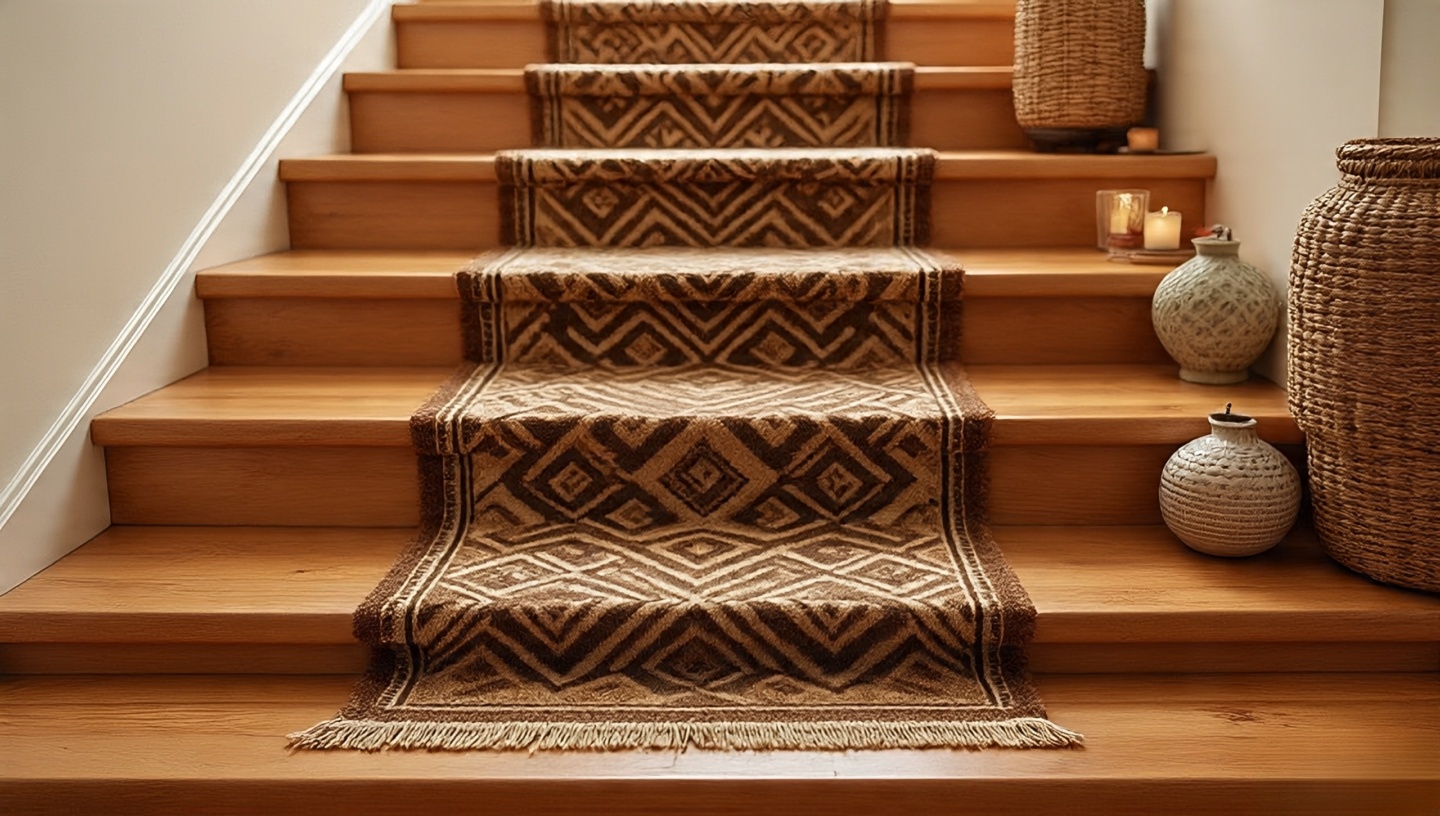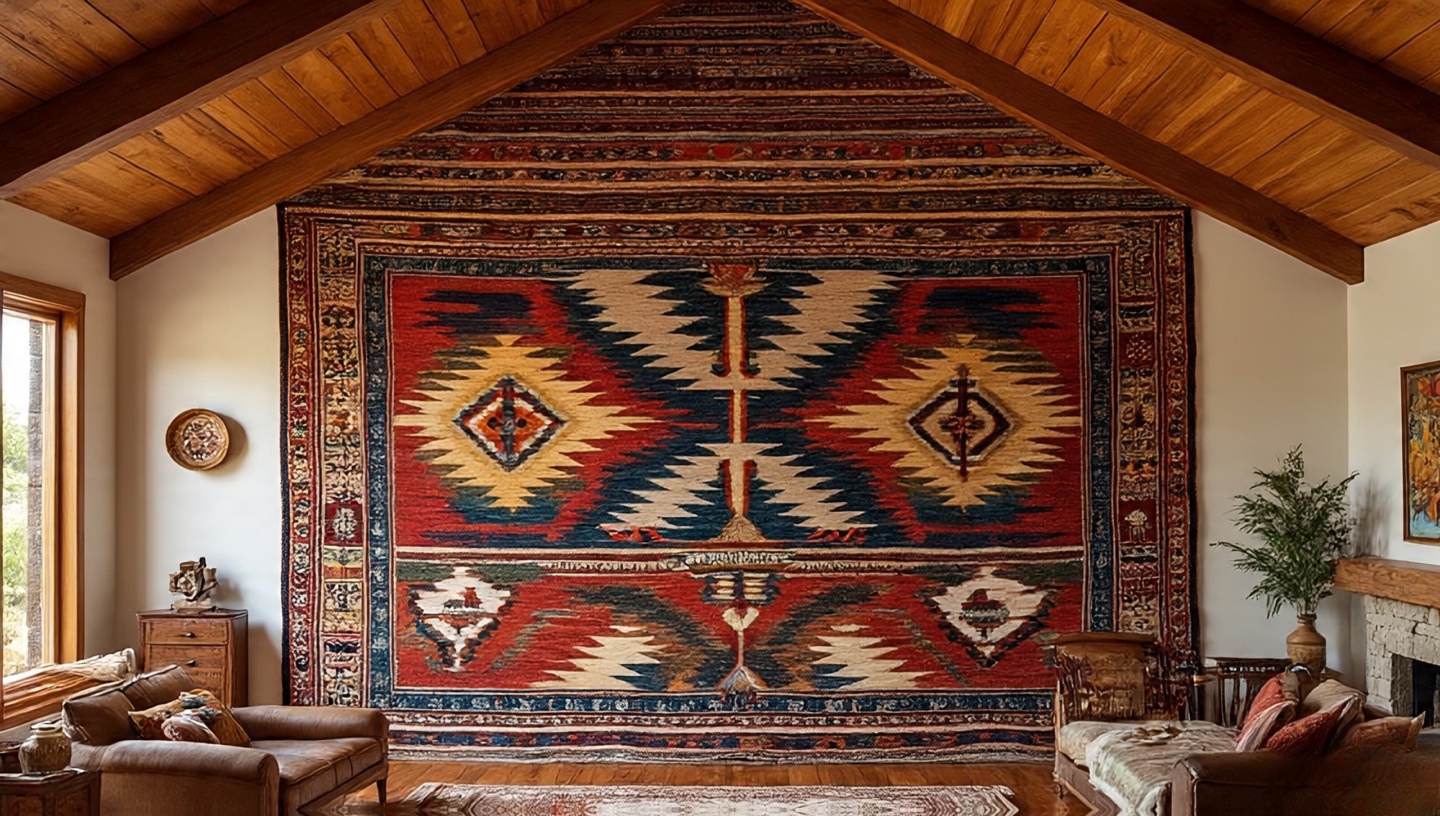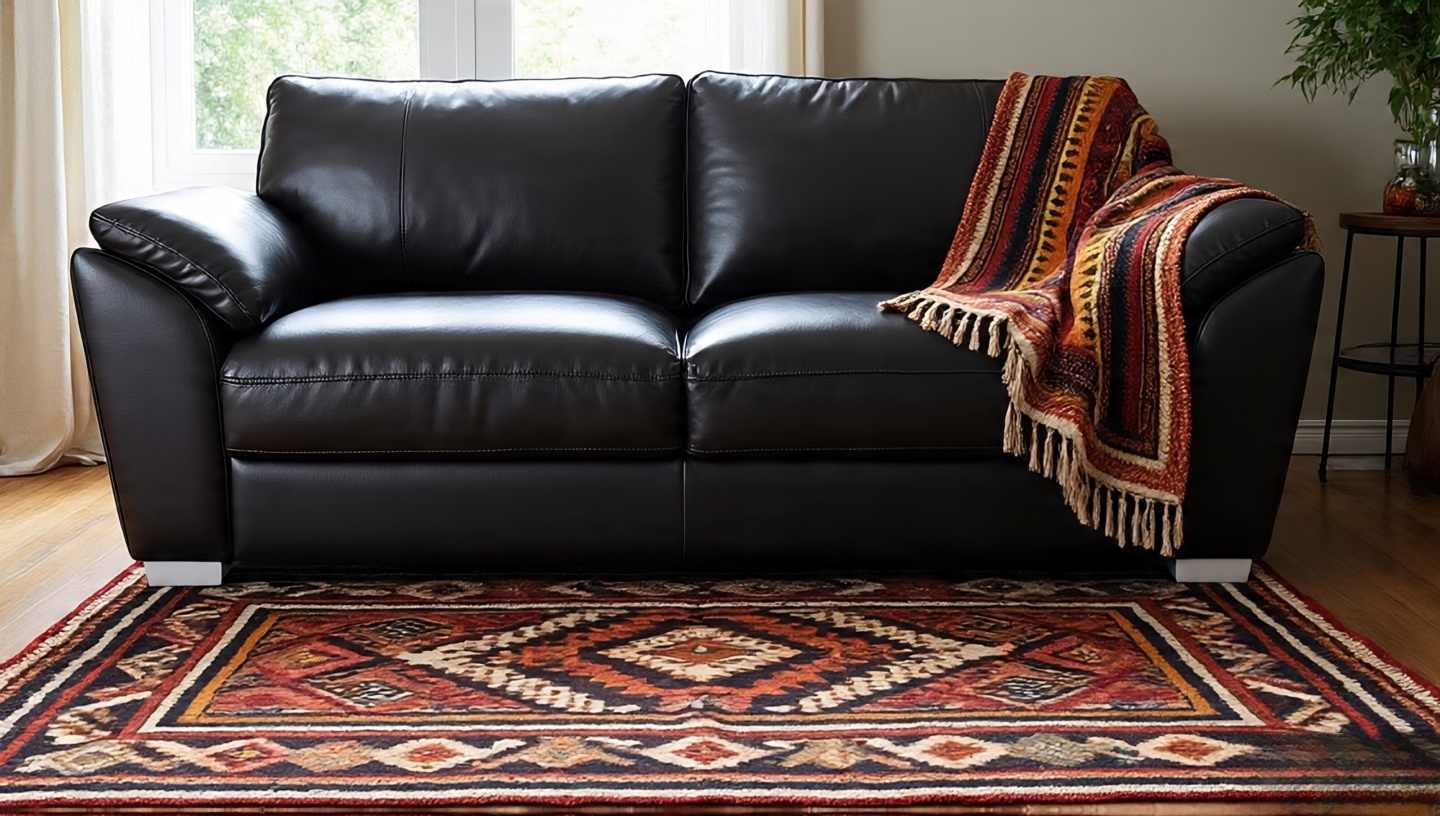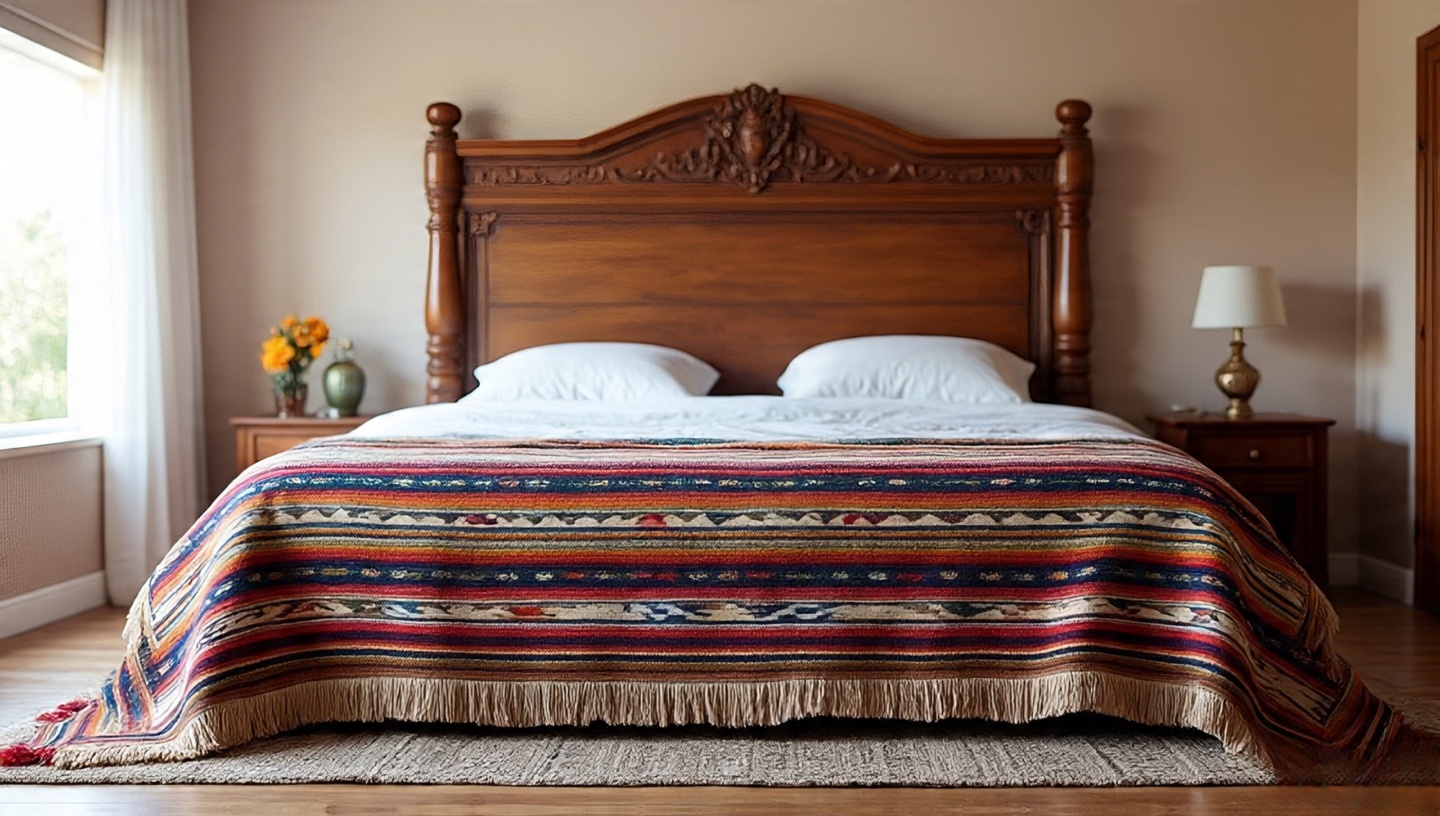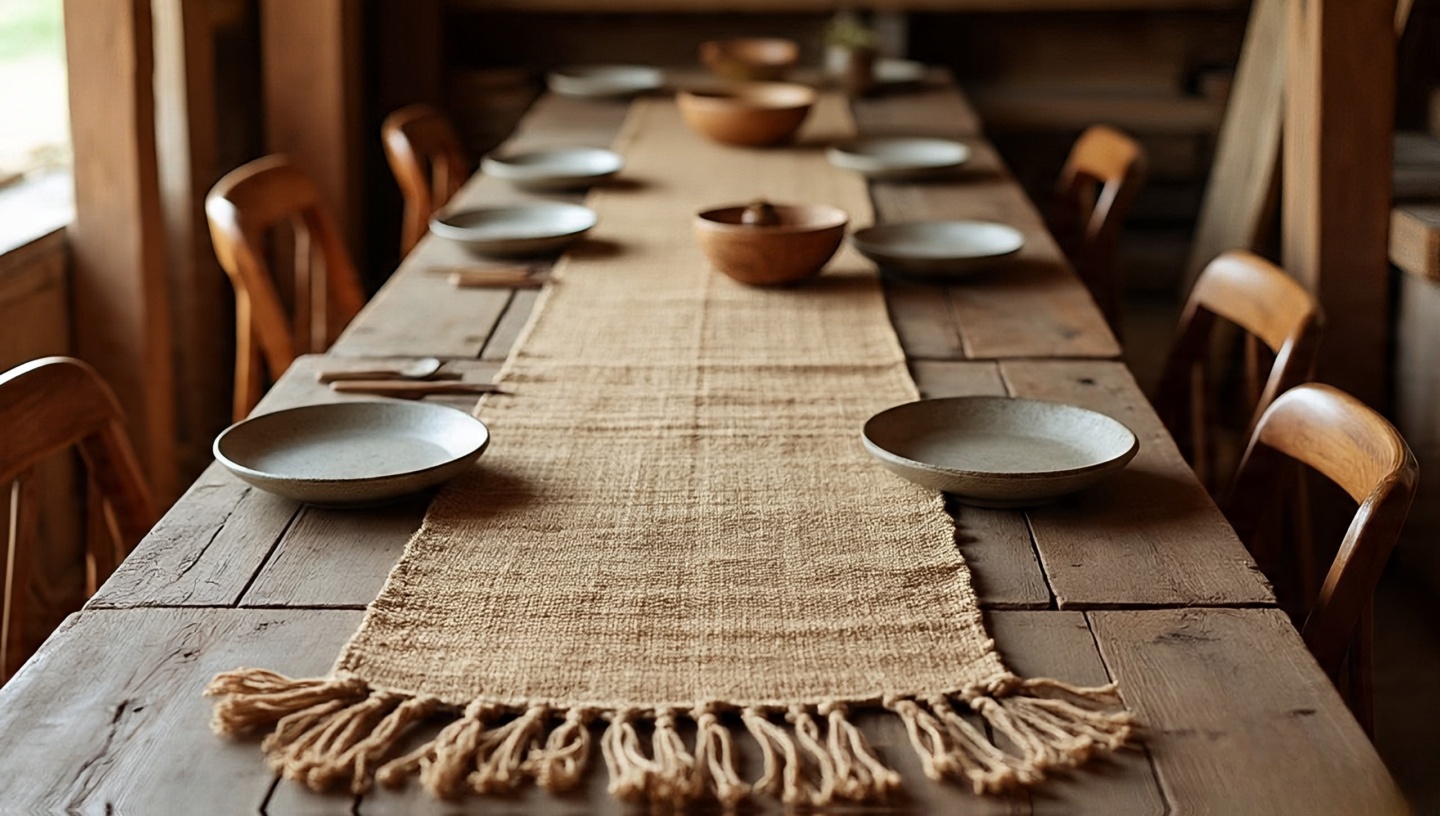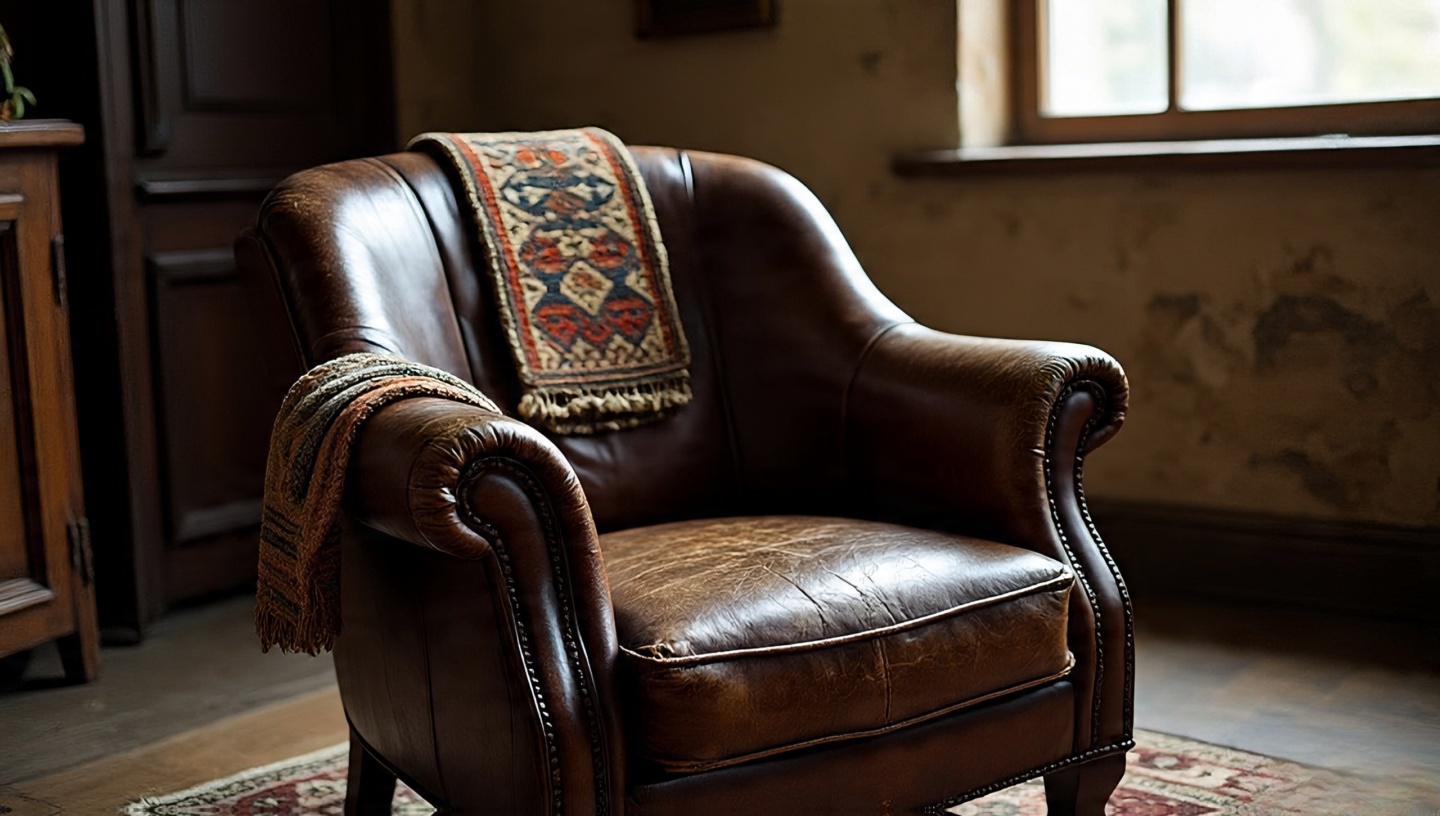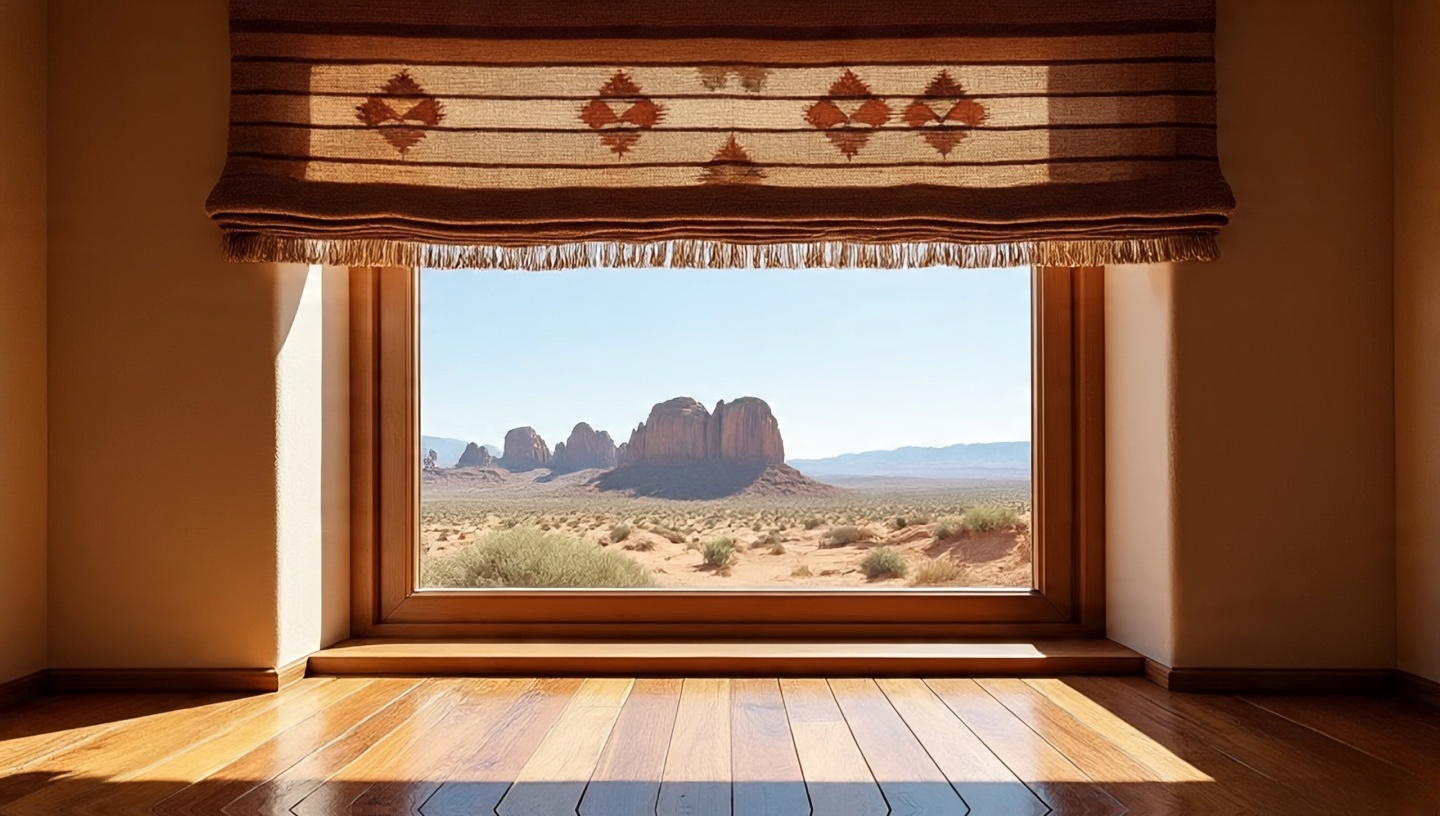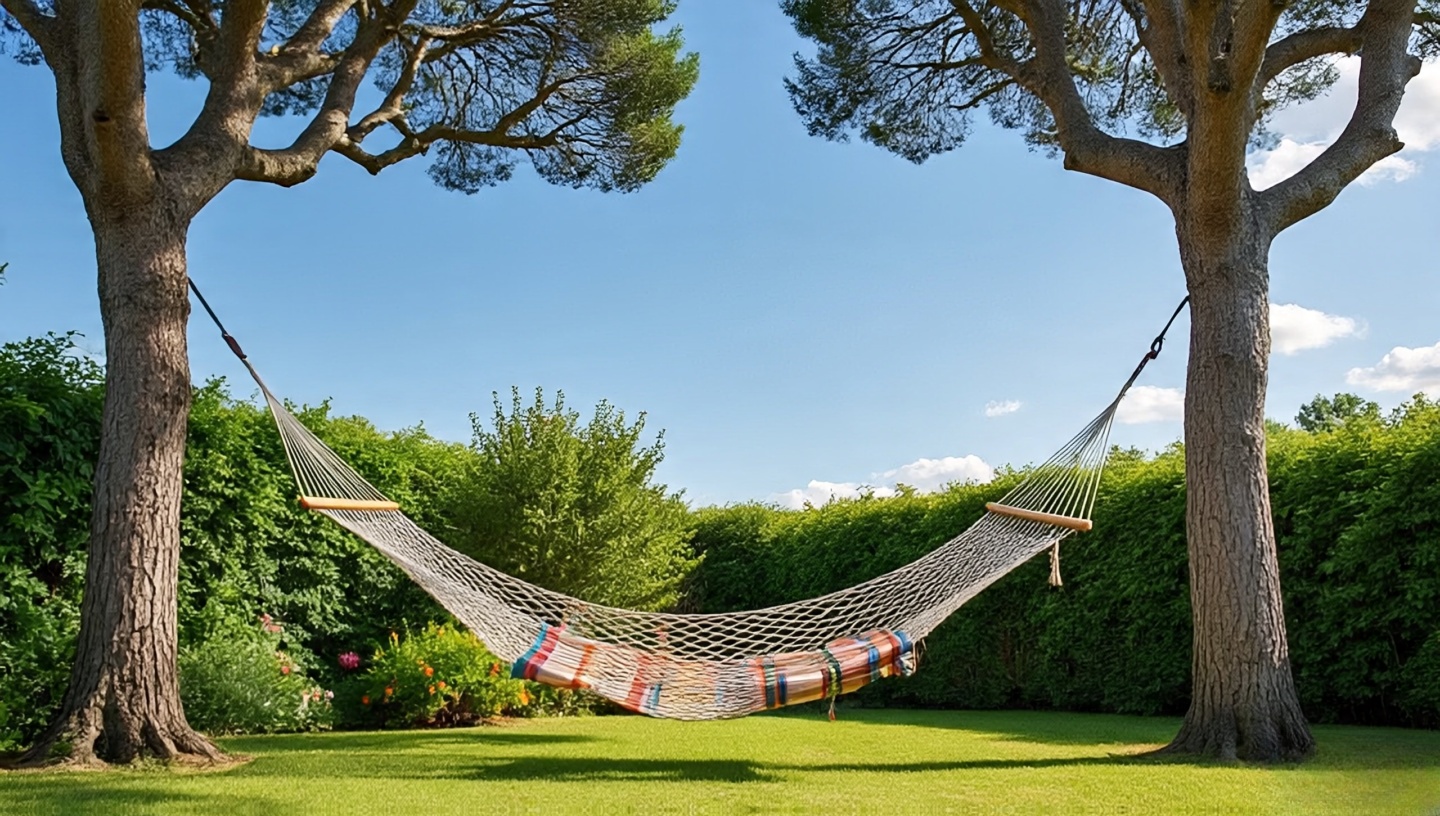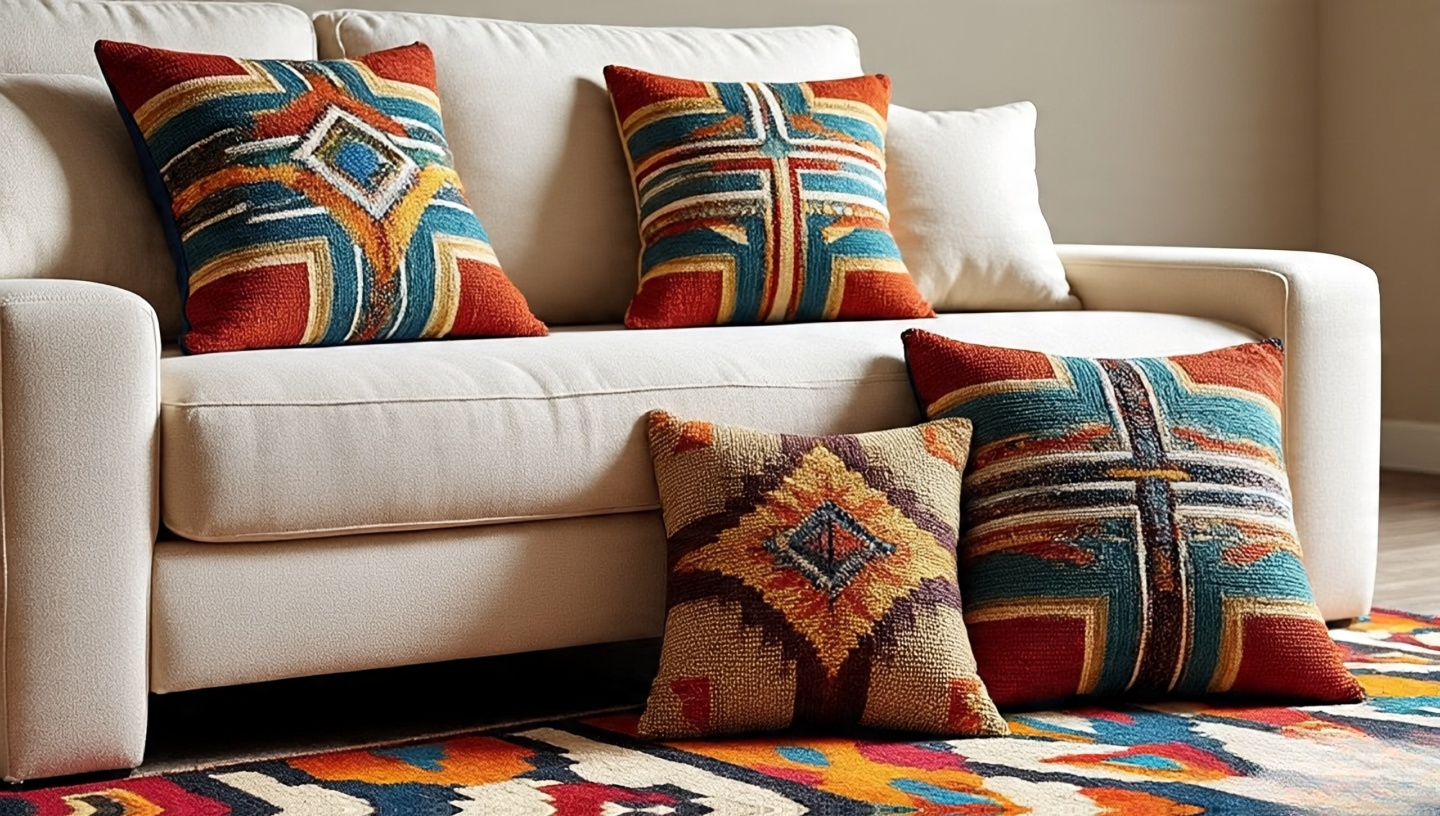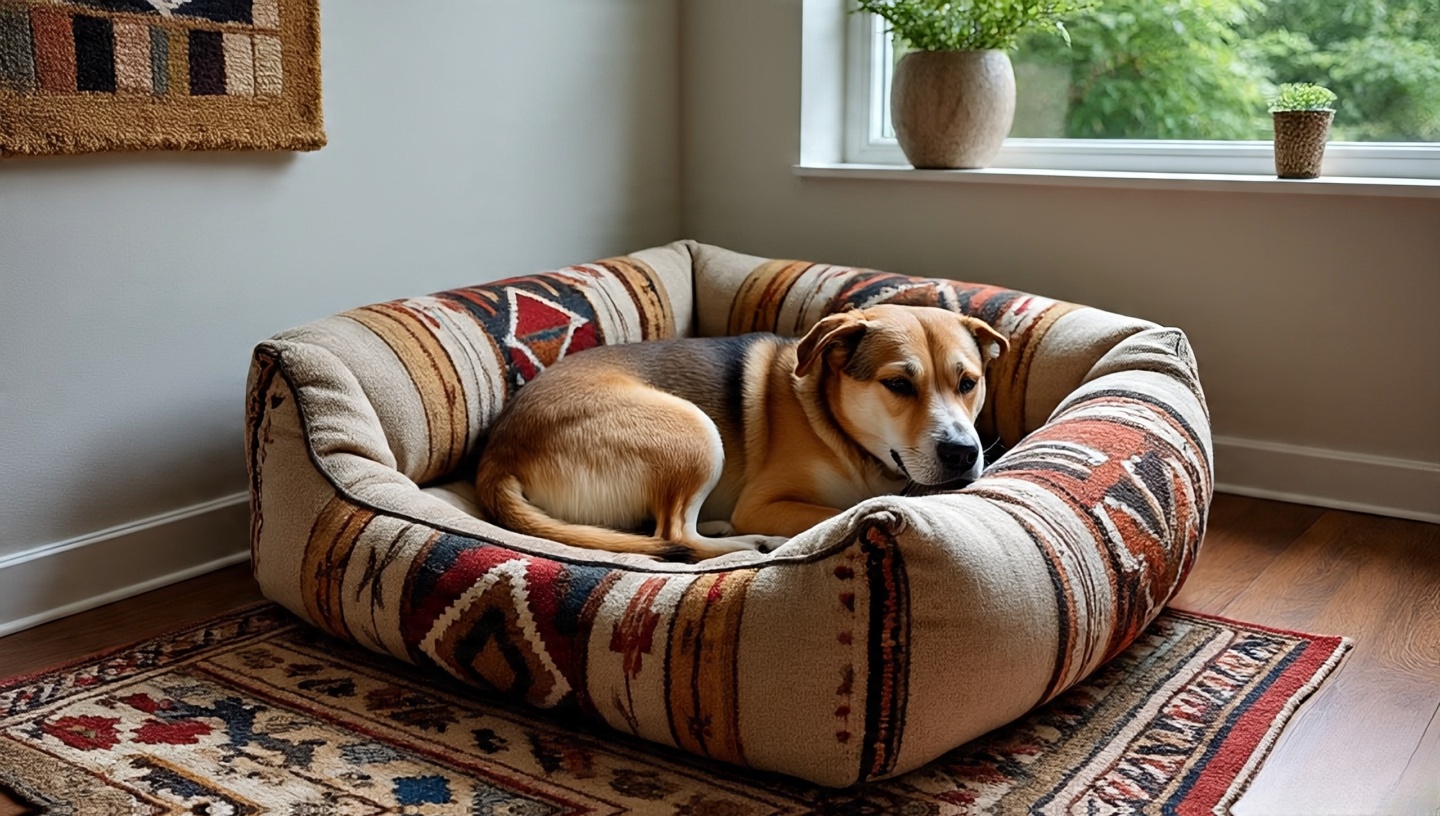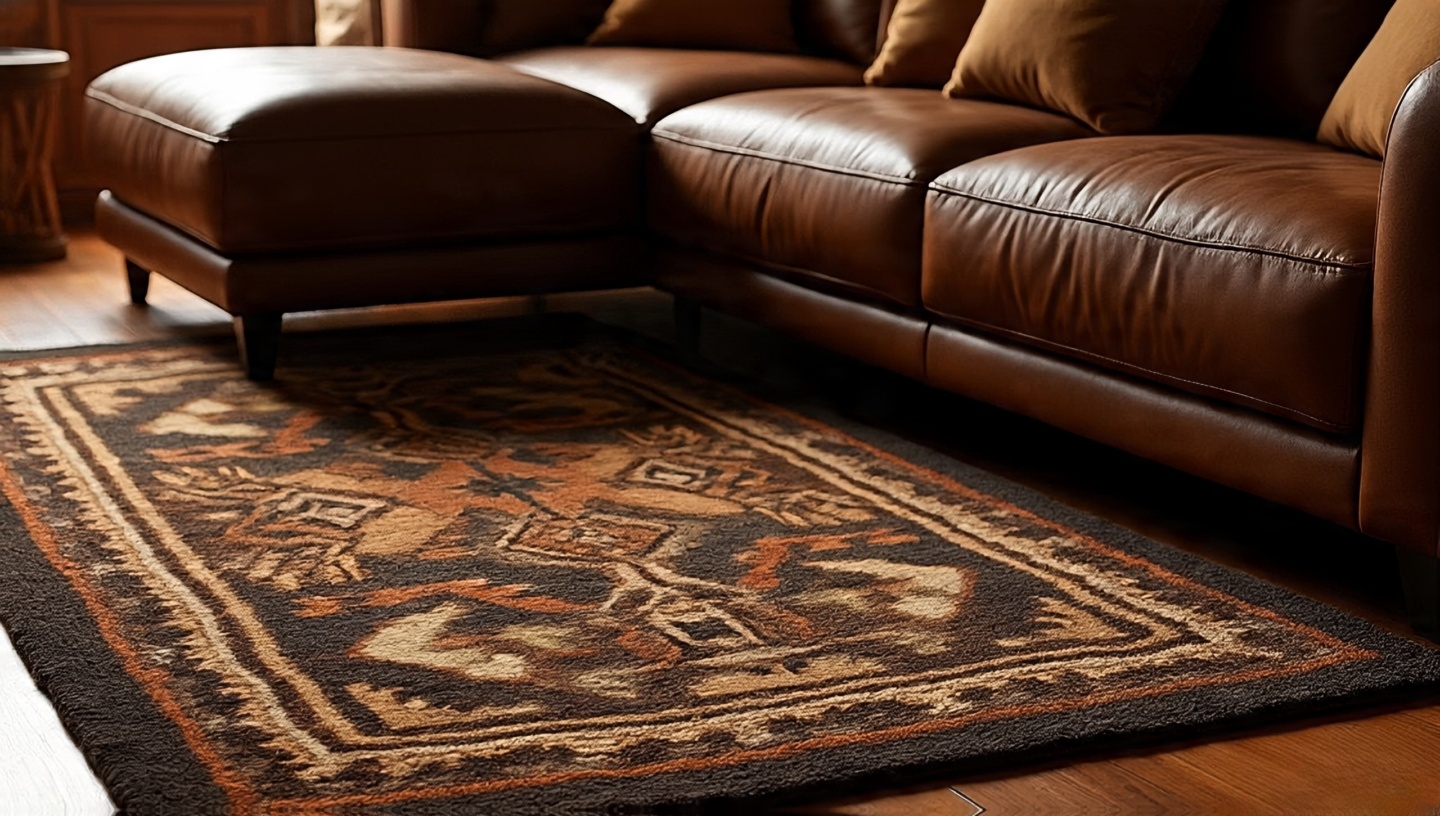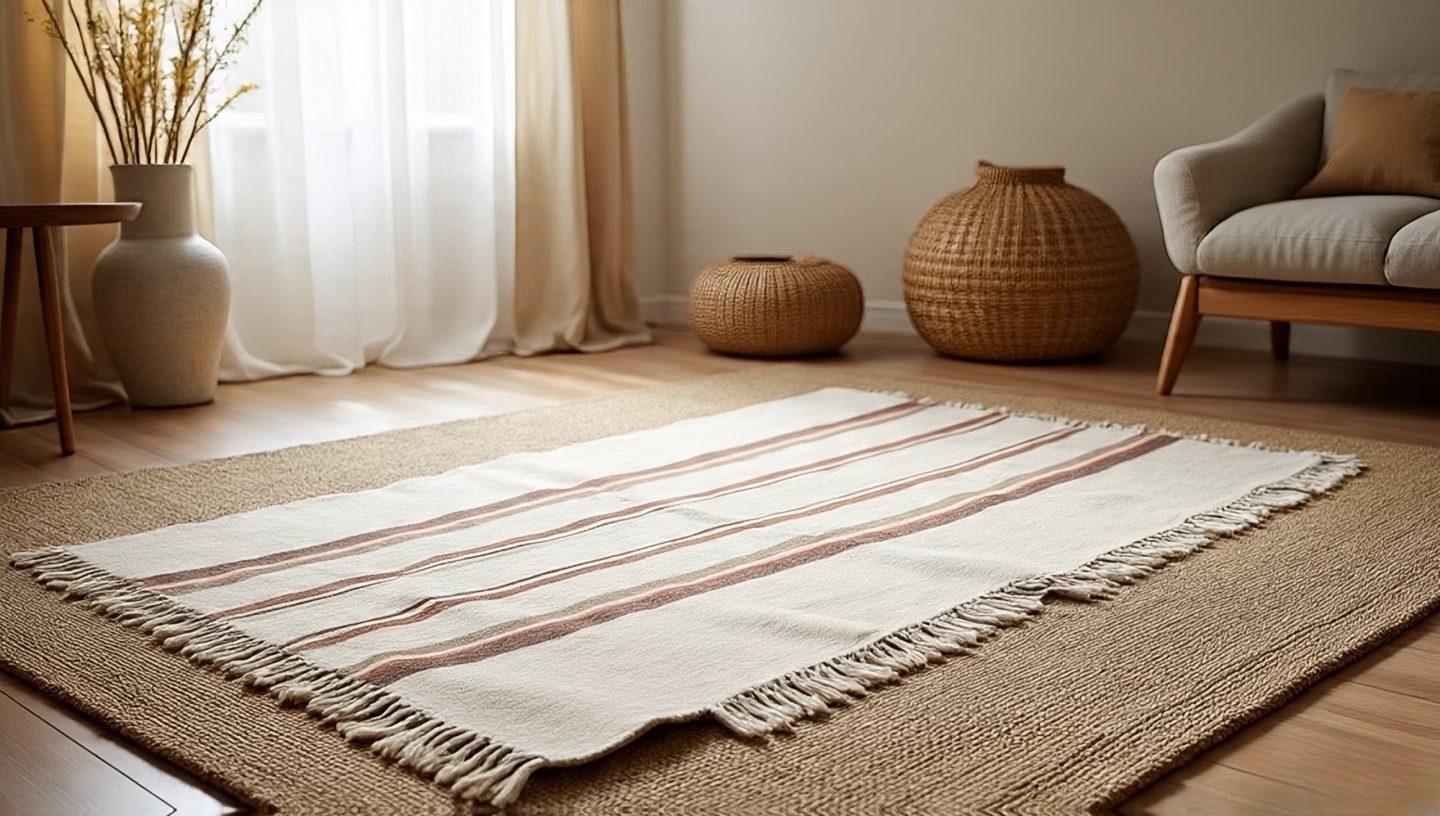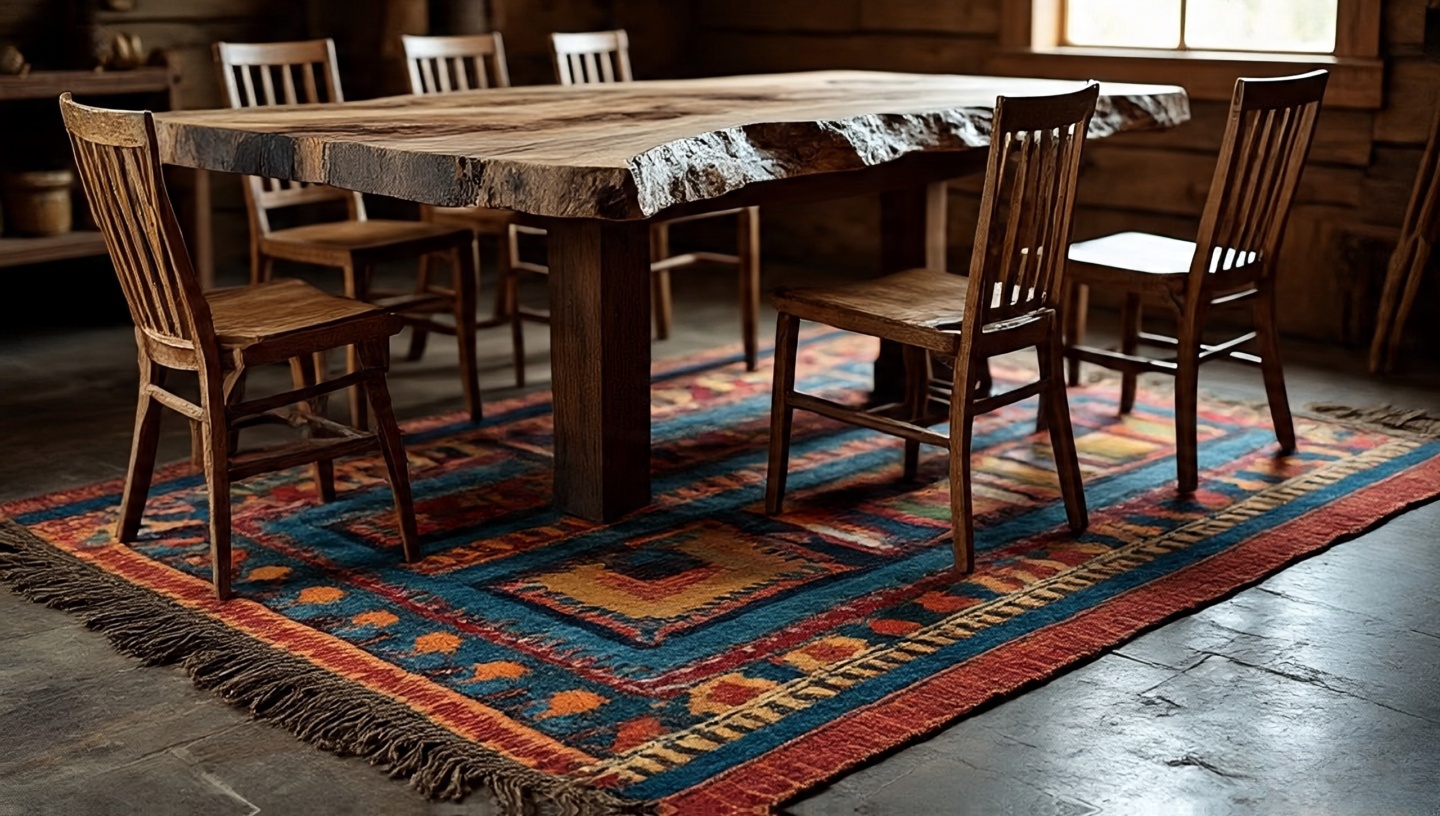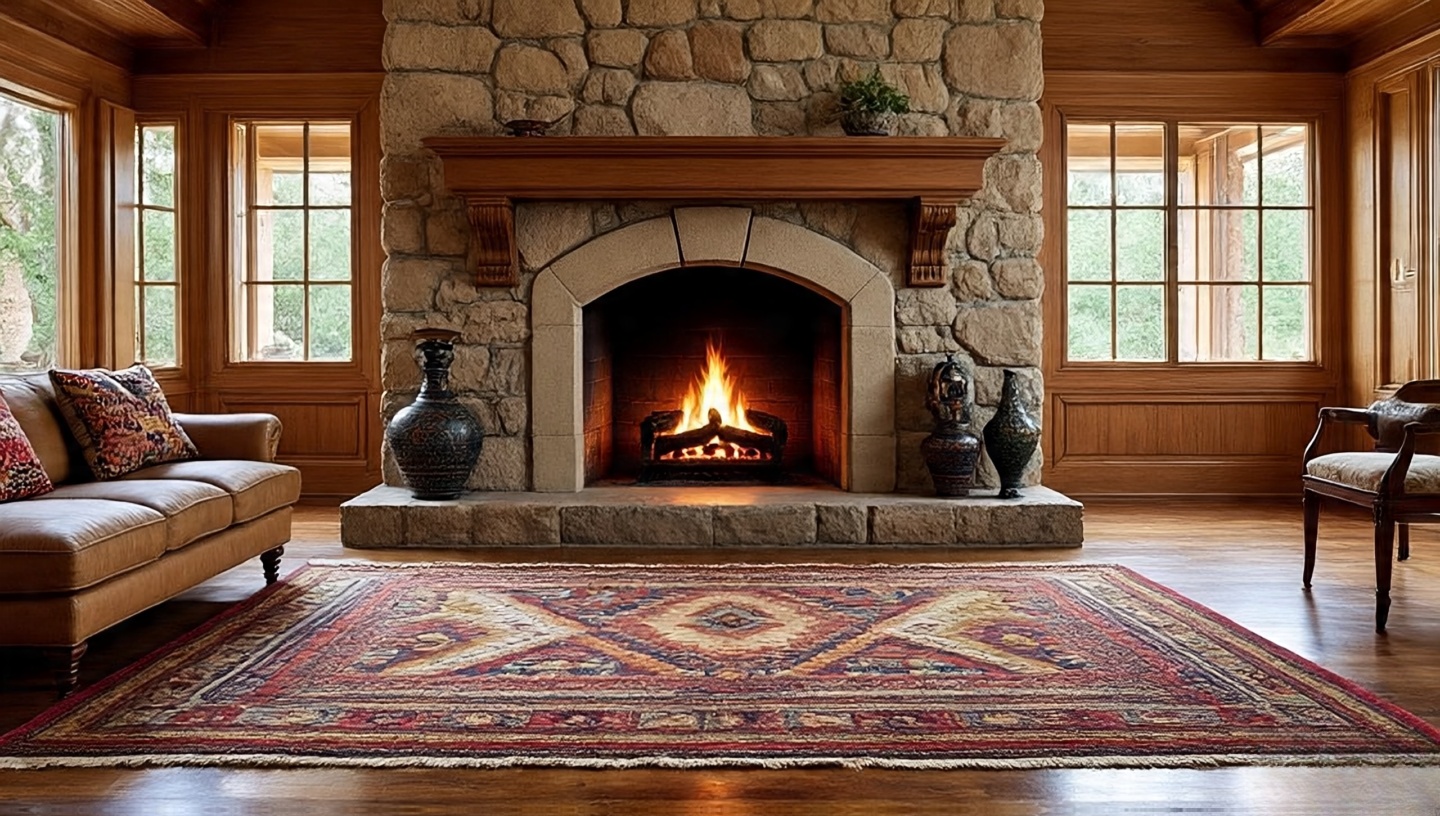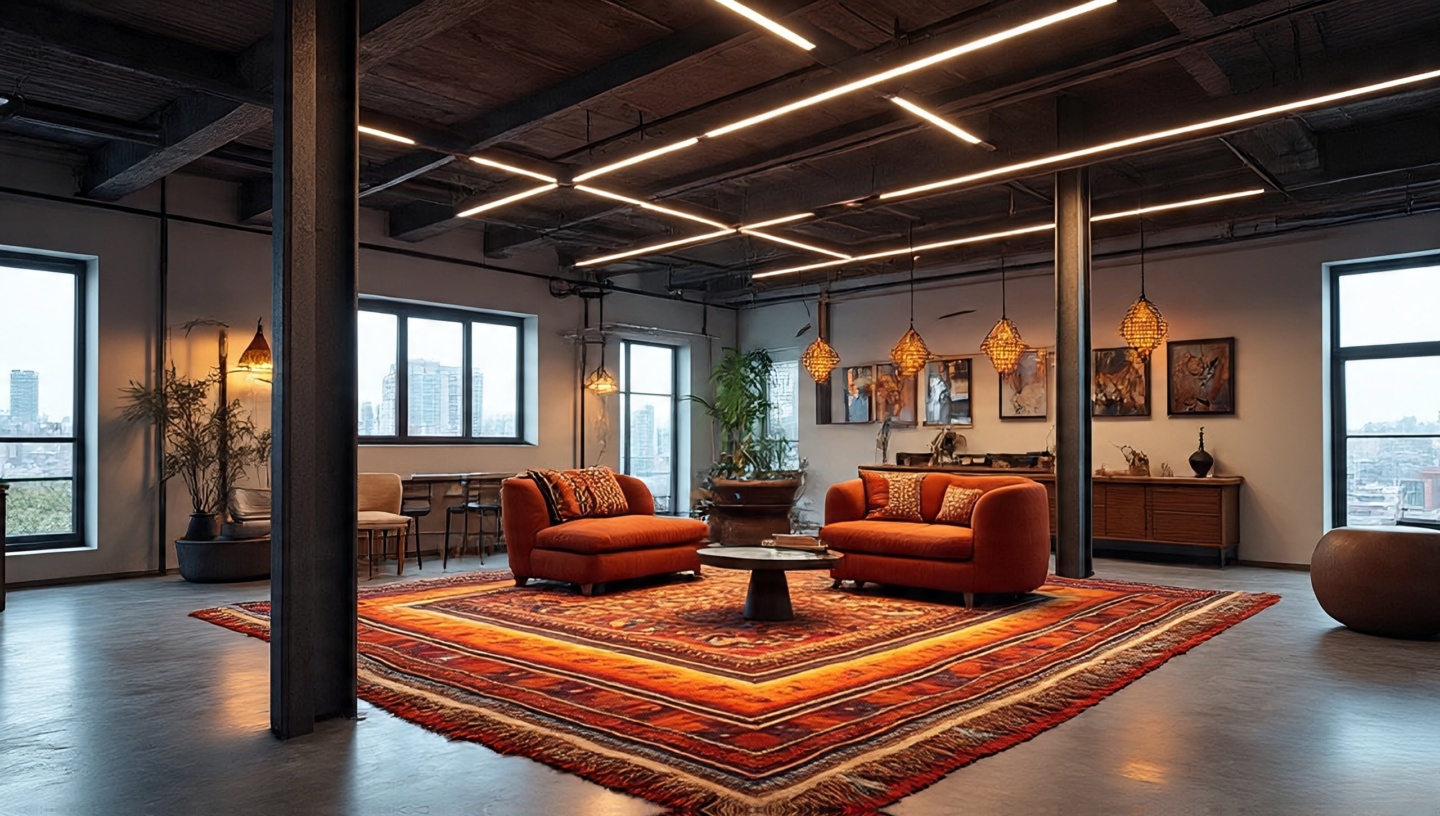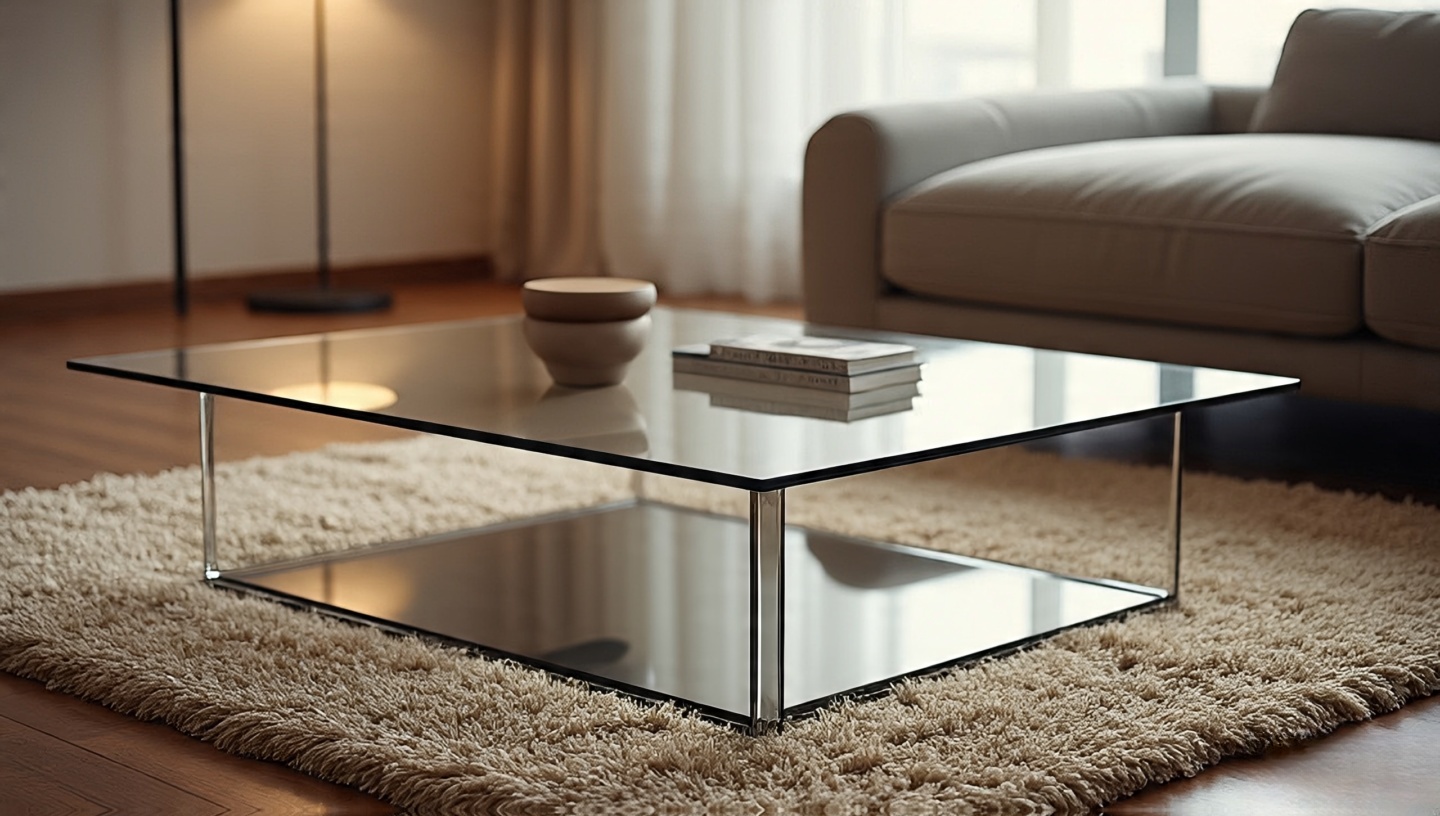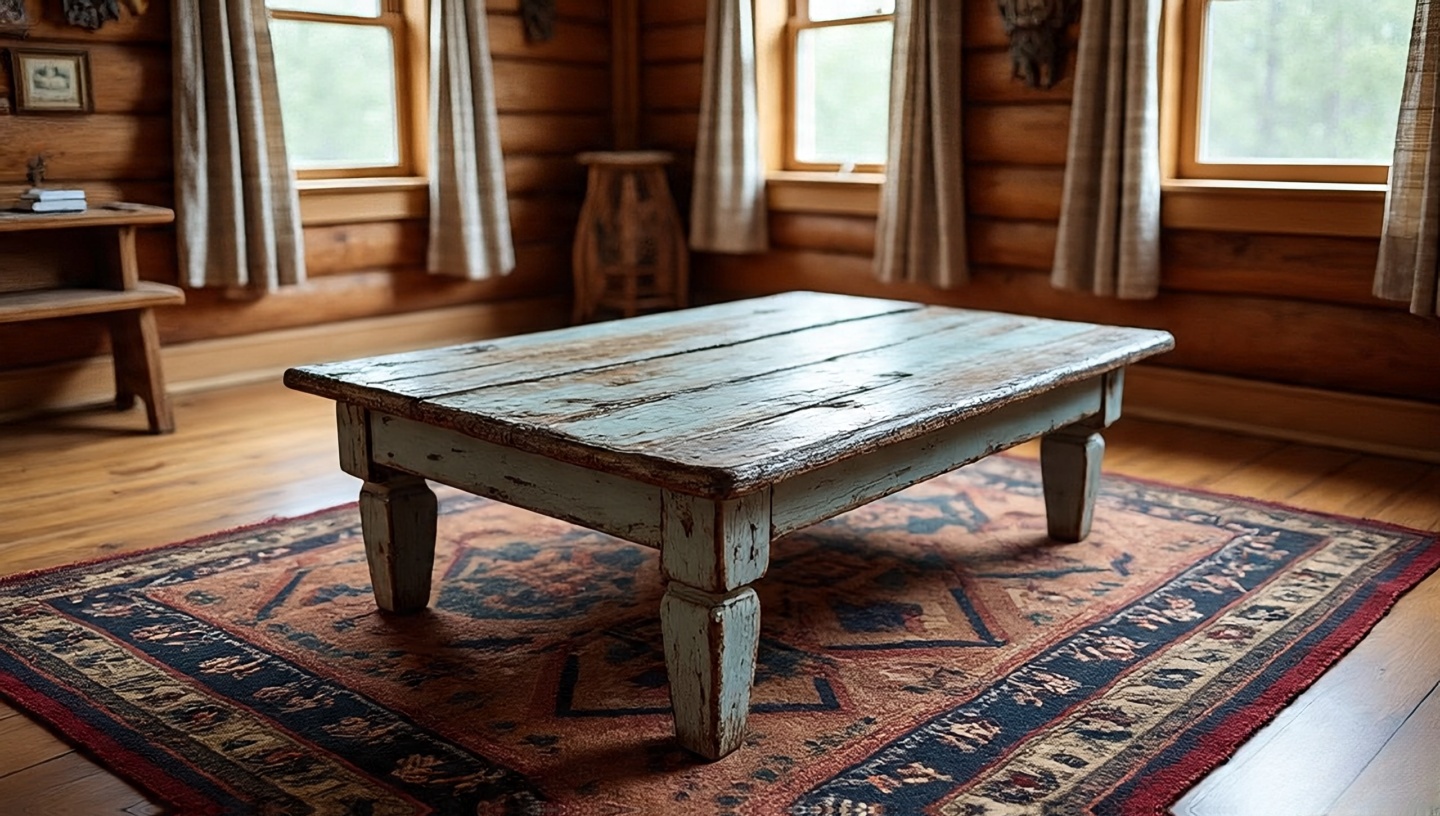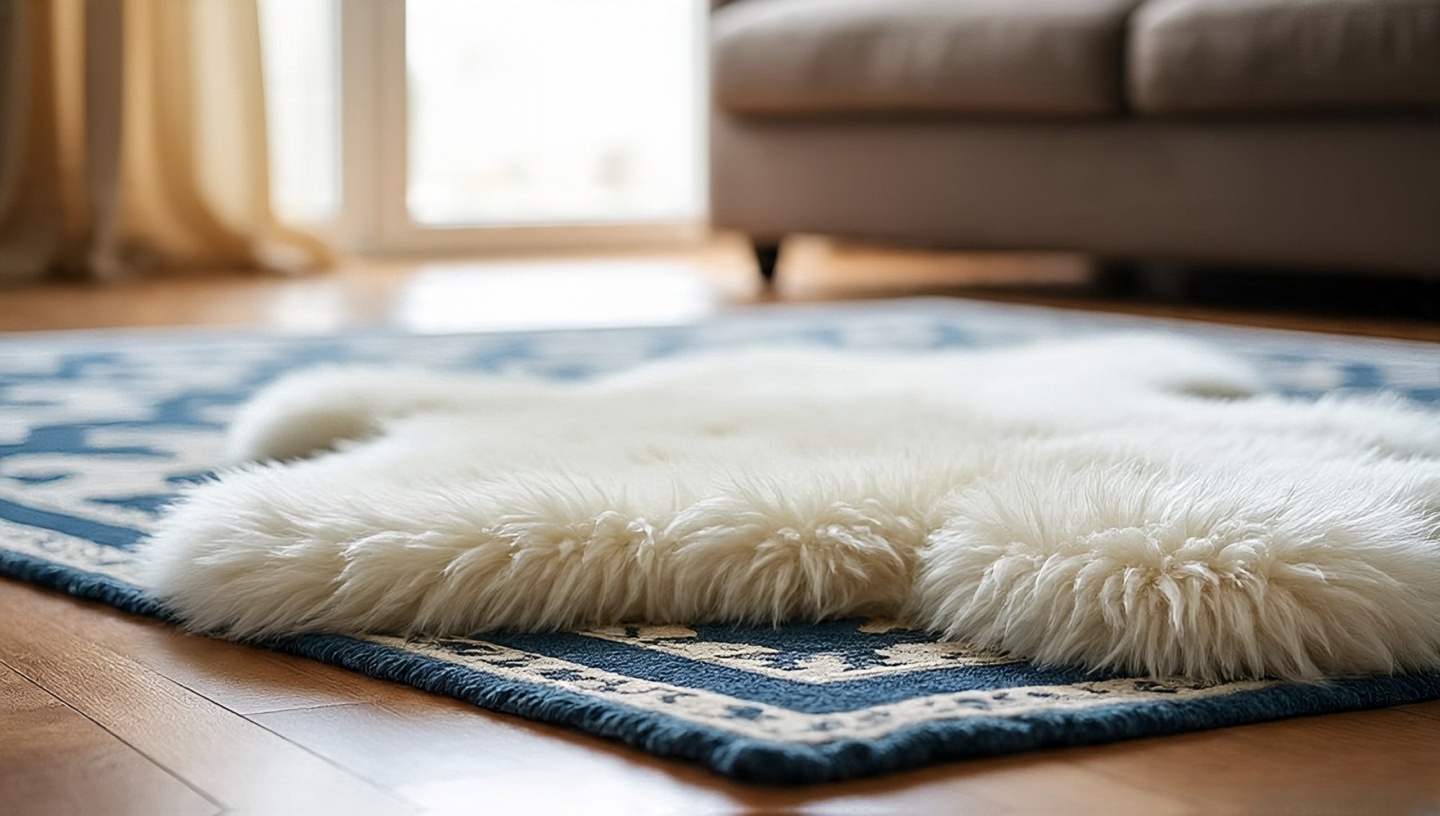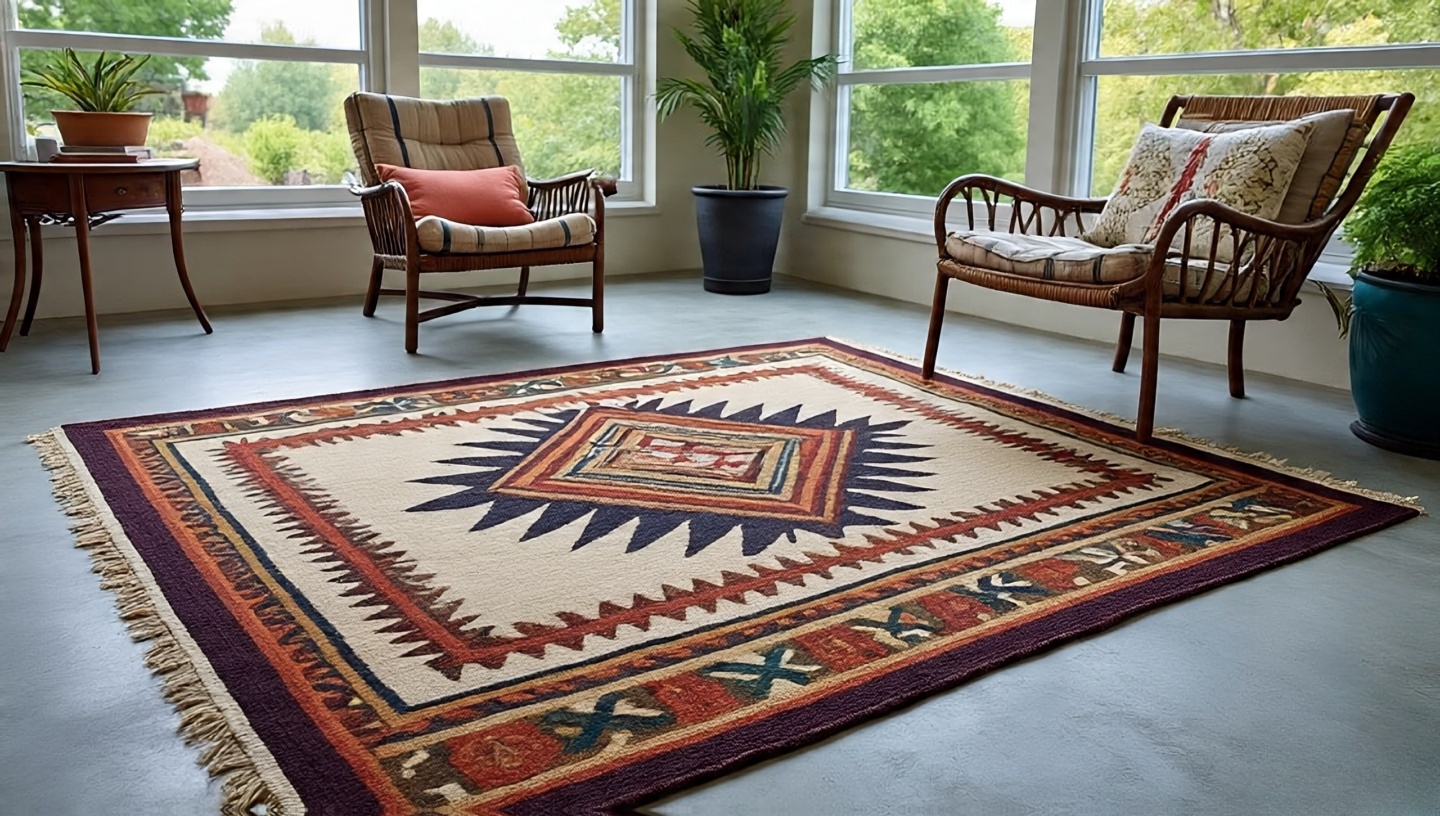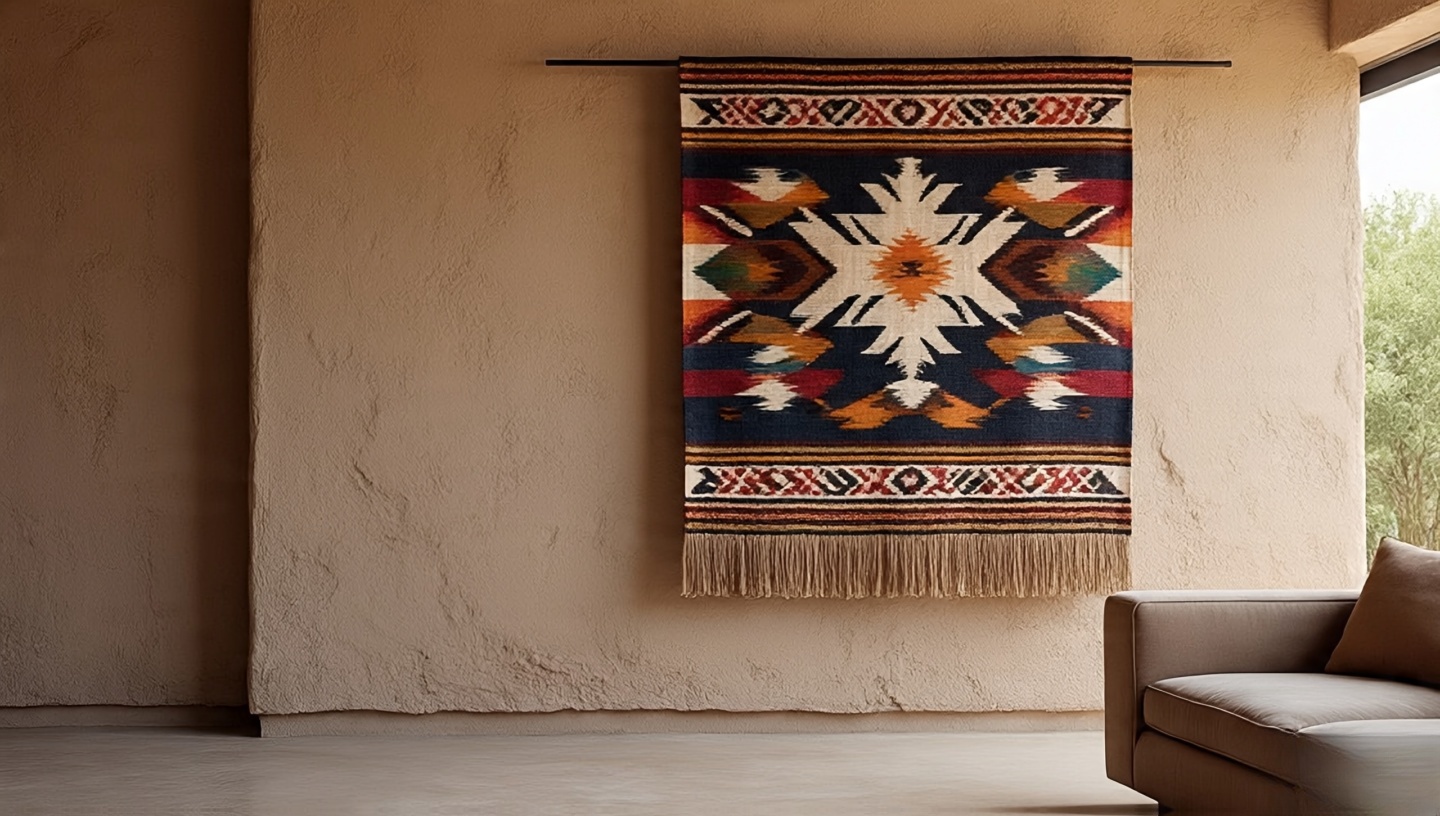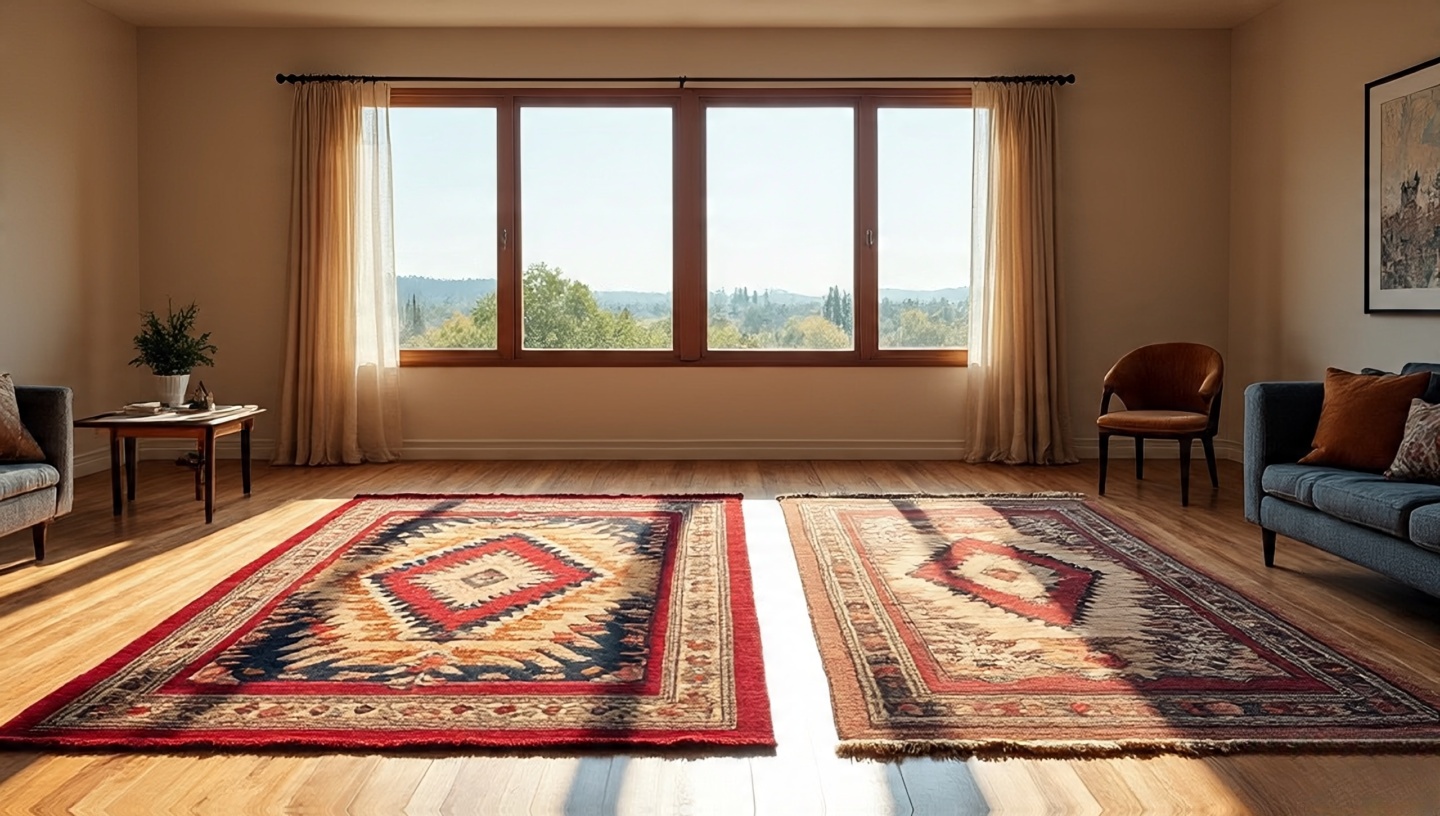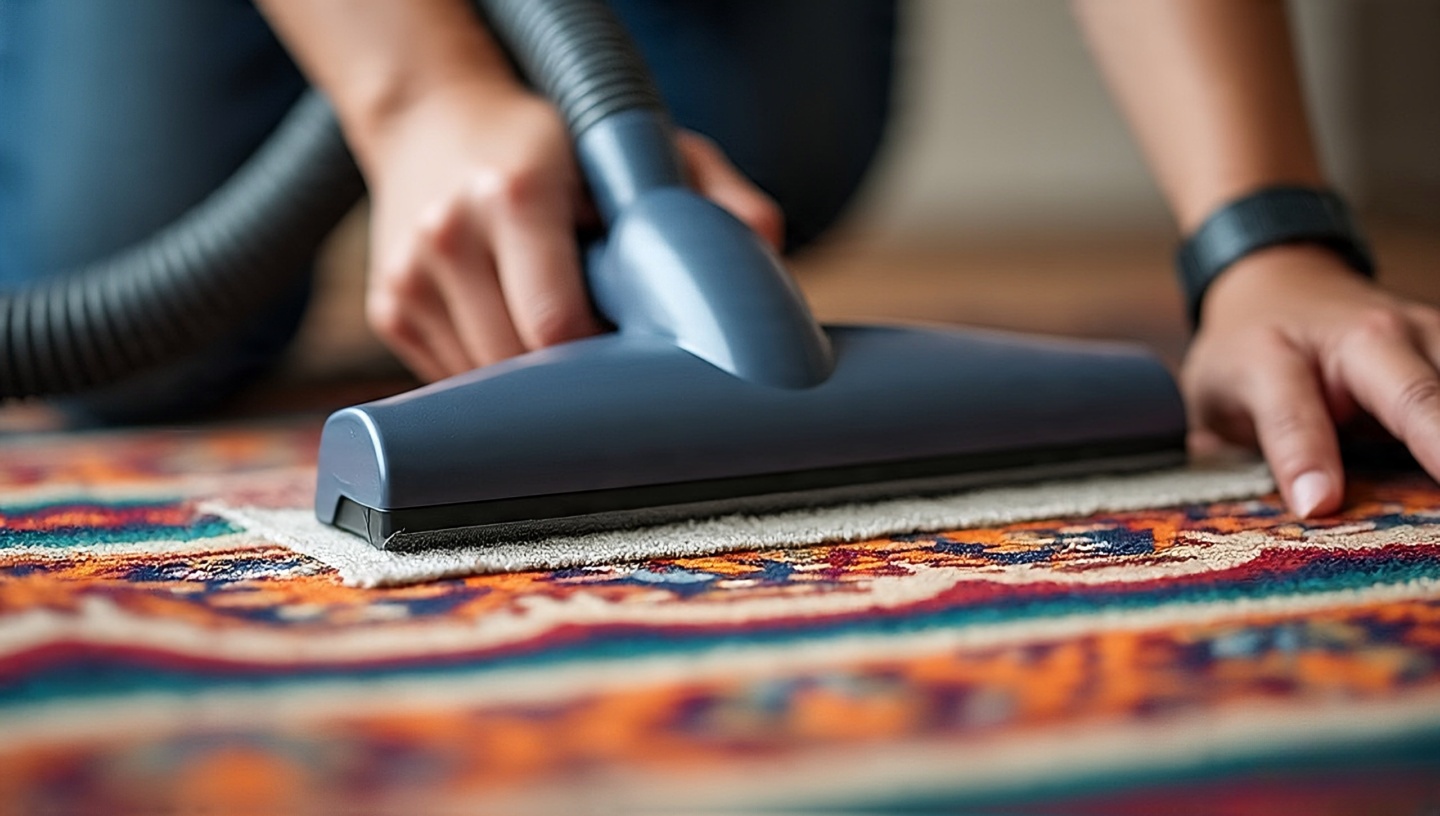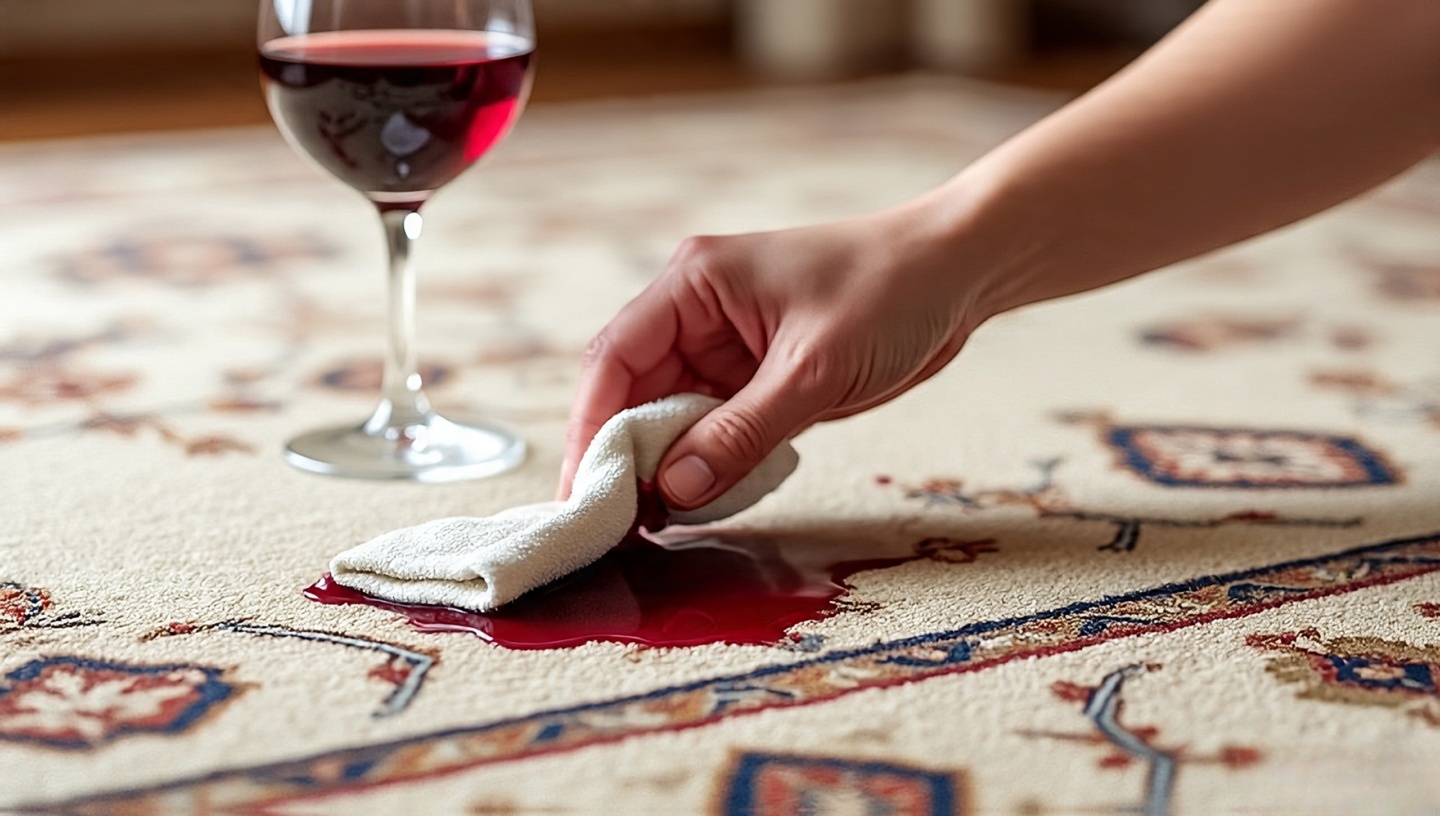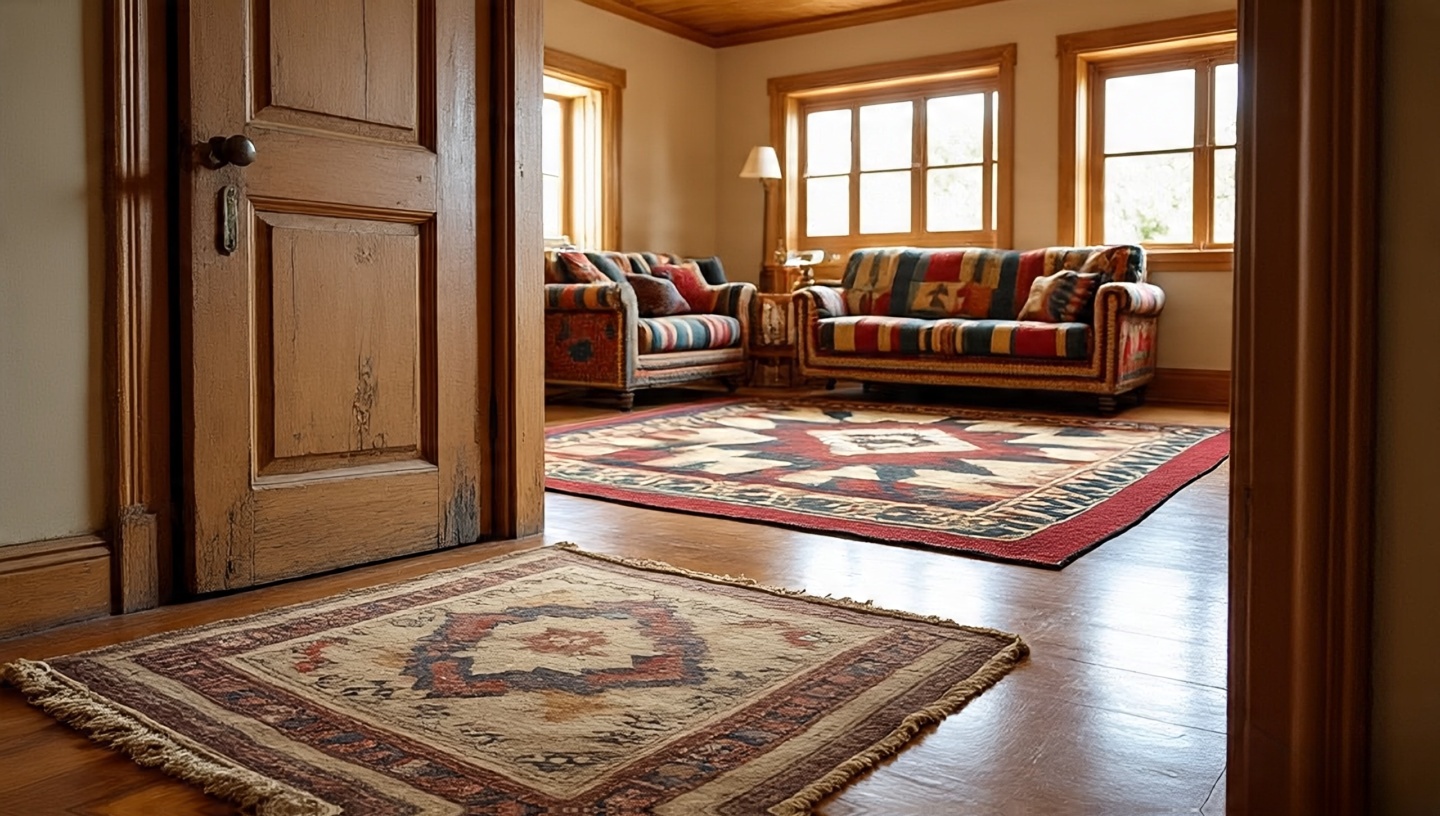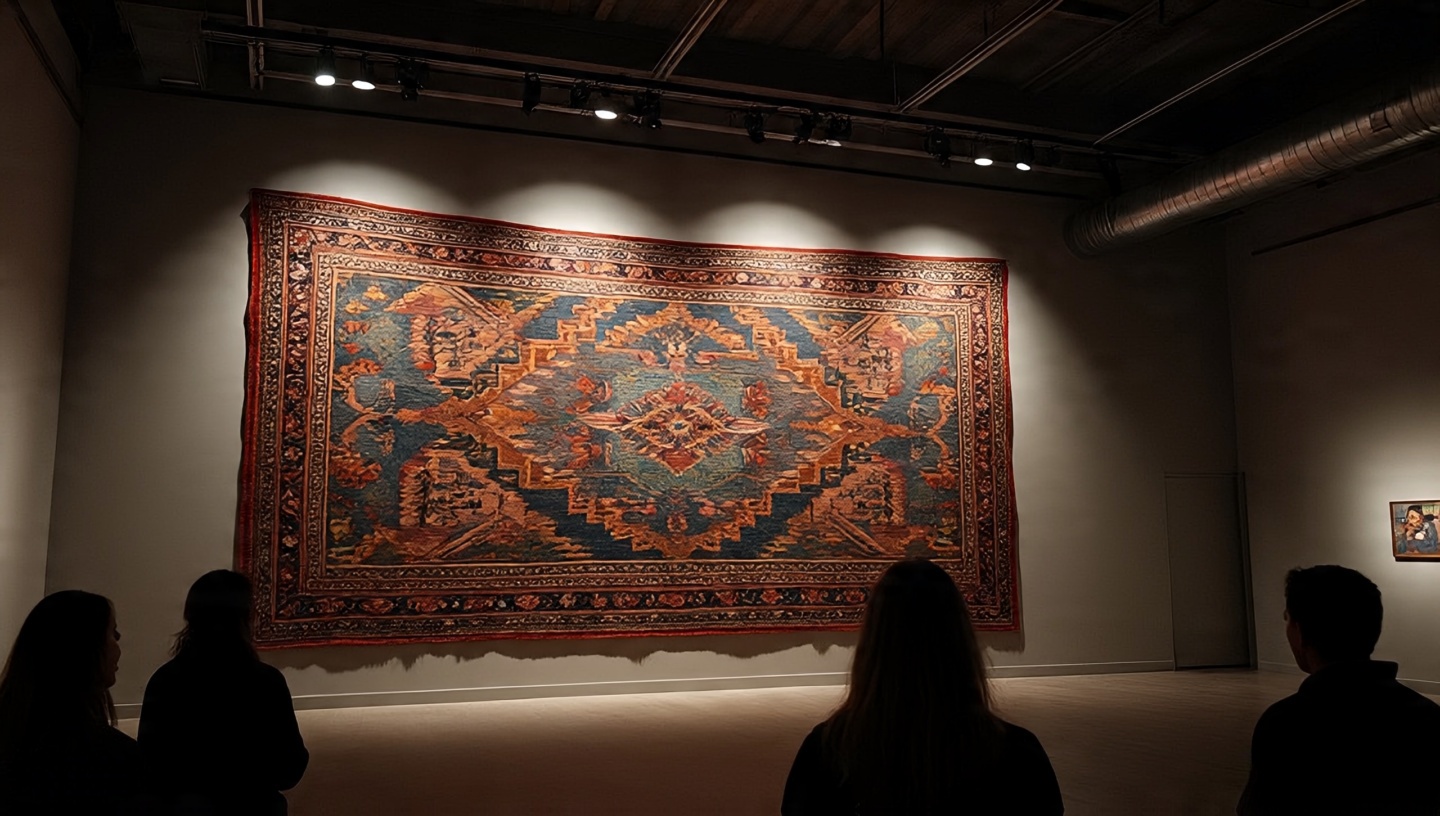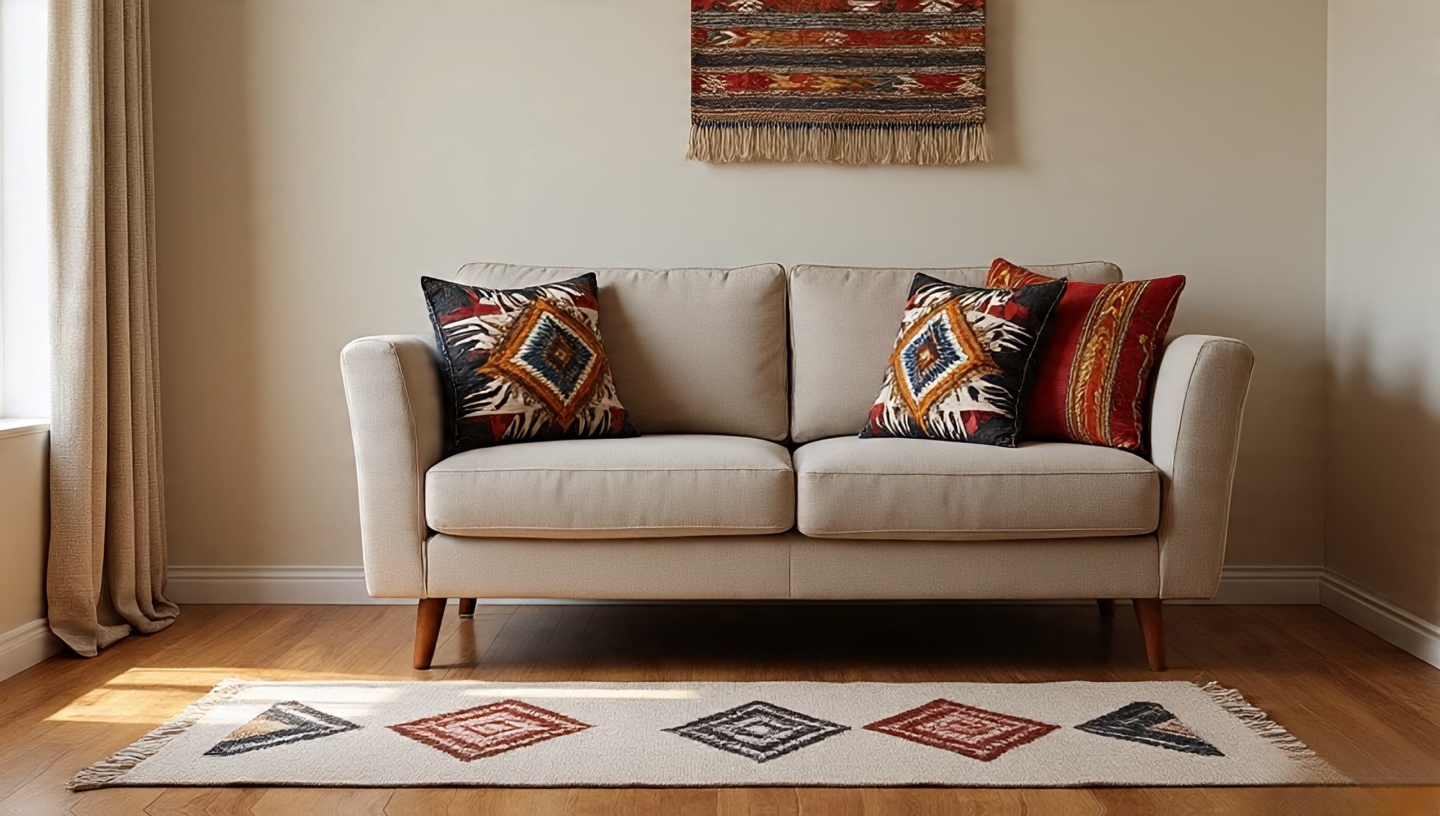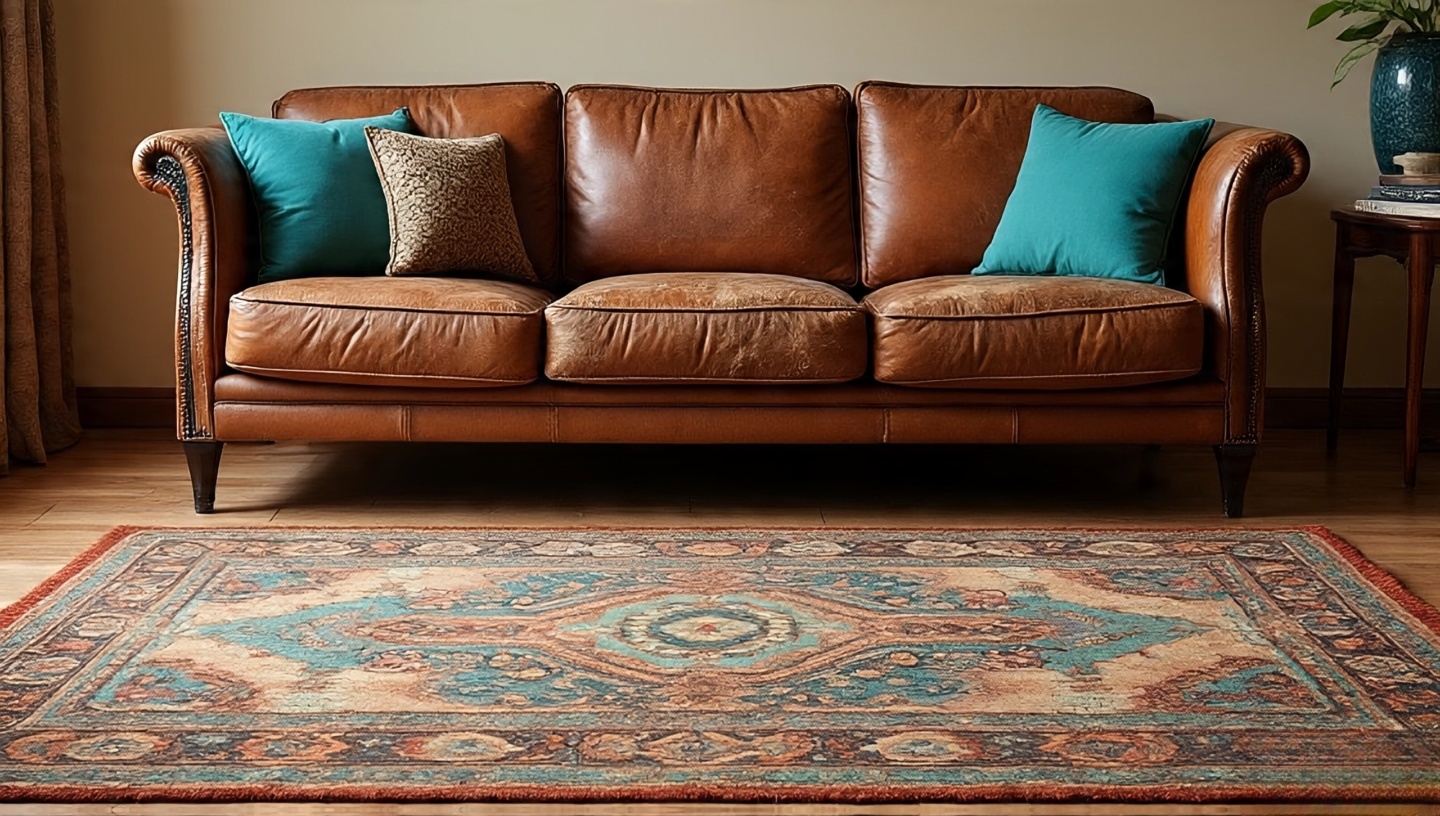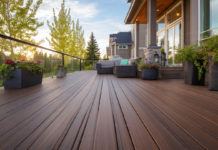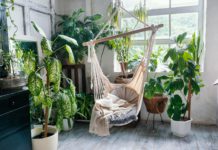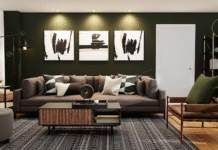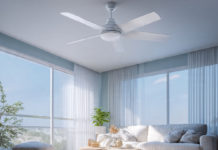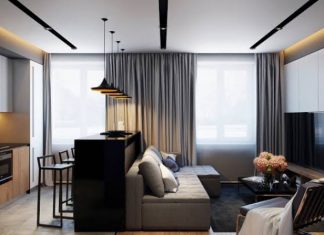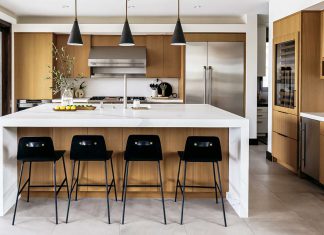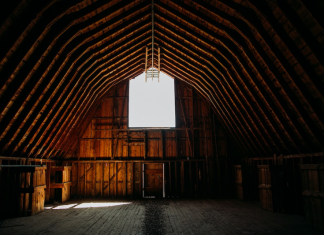Roohome.com – When you think about transforming a space into something warm, soulful, and effortlessly stylish, Southwestern rugs are often the secret ingredient. They’re more than just decorative pieces; they bring history, artistry, and a touch of the desert’s raw beauty right into your home. From tribal patterns to earthy tones, every textile carries its own story one that can ground your space while adding a bold splash of character.
In this guide, we’ll explore 58 Southwestern rugs and textiles ideas you can use to refresh your living room, bedroom, or even dining area. Whether you’re looking for Southwestern living room ideas that make a statement or subtle accents that bring coziness, these inspirations balance rustic charm with everyday practicality.
1-10: Playing with Color Stories Like a Pro
1. Earthy tones living room base
After three decades of walking into homes and sketching plans, I can tell you this: earthy tones never betray you. A rug in terracotta, sand, or soft clay instantly grounds a room. It’s not just about color it’s about evoking that “barefoot on warm soil” feeling. Use it as your anchor, then let furniture and decor float around it. Think of it as your desert floor, everything else will bloom on top of it.
2. Pop of turquoise (don’t overdo it)
Turquoise is irresistible yes, I’ve fallen into the trap of using too much myself. The trick? A rug with just a hint of turquoise. It brings freshness, like finding an oasis in the desert, without overwhelming the palette. Pair with neutral leather furniture and suddenly your rustic home looks alive, not chaotic.
3. Warm reds for energy and intimacy
I once styled a mountain cabin with a crimson rug under a reclaimed wood coffee table. Guests would literally gather around it like moths to a flame. Warm reds pull people together. In your living room, place it where people sit and share stories it will amplify the sense of intimacy.
4. Mustard and ochre hints
These are your “desert sun” colors. Use them sparingly, maybe in rugs with stripes or woven details. When natural light hits, they glow. I’d suggest pairing them with off-white walls it feels like sitting in the golden hour all day long.
5. Black and white contrast for modern rustic vibes
Minimalists, listen up: you don’t have to abandon Southwestern charm. A monochrome Navajo-inspired rug gives drama while staying sleek. If your home is leaning modern, this is the safest gateway into Southwestern living room ideas.
6. Desert sunset blends (my personal favorite to soften bedrooms)
Pinks melting into oranges, fading to soft purples it’s like the horizon at dusk woven into fabric. I recommend these rugs in bedrooms, because the gradient helps slow your mind down. After a long day, stepping into a sunset-colored rug feels like slipping into calm.
7. Sage greens for subtle calm
Muted sage woven into a rug can balance out heavier rustic elements like dark wood or leather. It mimics desert vegetation. In my designs, I use sage textiles in reading corners or meditation spaces it calms without stealing the spotlight.
8. Multi-tone layering (yes, stack them!)
Most people stop at one rug. Big mistake. Layer a neutral jute rug with a smaller Southwestern patterned one on top. The depth it creates is almost architectural it turns a flat room into a dimensional experience. Try it in your living room seating area.
9. Bold primary accents (for the risk-takers)
Once in a while, go bold. A rug with a stripe of strong cobalt or mustard yellow against earthy tones is like a lightning bolt. It works best in homes with otherwise muted palettes think white adobe walls or light wooden floors.
10. Natural undyed wool for pure authenticity
Here’s something people forget: not all beauty comes from dye. Rugs made of undyed wool have incredible natural variations soft creams, grays, browns that feel raw and honest. They’re timeless, easy to pair with any color scheme, and age beautifully. If you’re building a truly rustic home, this is where you start.
11-20: Pattern Power scale, rhythm, and the stories your rugs quietly tell
11. Diamonds with breathing room (let the motif lead the plan)
Classic diamond motifs are the heartbeat of Southwestern textiles. After 30 years space-planning living rooms, I’ve learned that large diamonds need air around them. Keep your main furniture legs on the rug, but avoid cluttering the center with too many small tables. It allows the motif to read clearly like a focal painting on the floor. If you love a layered look, float a narrow bench or an airy metal coffee table so the pattern remains visible.
- Design ratio tip: Aim for a 60/30/10 split 60% dominant diamond rug, 30% supporting solids (sofa, drapes), 10% small prints (pillows).
- Where it shines: Open-plan layouts and Southwestern living room ideas with airy traffic flow.
12. Zigzag energy use direction to guide movement
Zigzags add momentum. In long rooms or hallways, align the “points” toward your destination (fireplace, window, dining zone). The eye will travel along those angles, making narrow spaces feel purposeful rather than awkward. In an earthy tones living room, a low-contrast zigzag (rust on clay) creates movement without visual noise.
Pro move: Repeat the zigzag subtly on a throw or lumbar pillow to echo the rhythm no matchy-matchy, just a family resemblance.
13. Stripes as architecture (band your space)
Think of striped rugs as portable architecture. Broad bands can “square up” a room that’s slightly off or visually widen a narrow space. Vertical stripes elongate; horizontal stripes expand same rules as fashion, honestly. If you have heavy beams or a stone fireplace, choose stripes that are slightly irregular to keep the look handcrafted and warm.
- Dining room note: Stripes under a rectangular table create elegant order. Peek at Southwestern dining room ideas for pairing patterns with wood grains.
14. Geometric medley without chaos
You can mix diamonds, triangles, and bands in one textile if you control contrast. Keep one geometry dominant, one supportive, one whisper-quiet. This hierarchy keeps the composition legible from across the room. When the walls are white or adobe, a medley pattern adds the “soul” your modern envelope might be missing.
Architect’s caution: Don’t place three strong geometries on three different surfaces (floor, drape, large art) at the same intensity. You’ll tire of it quickly.
15. Chevron vs. herringbone two cousins, two moods
Chevron feels contemporary and bold; herringbone reads classic and textural. In a rustic home with heavy wood, a chevron rug adds crispness that cuts through the weight. In lighter, desert-inspired decor, herringbone’s broken zig softens the scene like wind-blown sand.
- Small room trick: Herringbone in low contrast keeps rooms cozy without shrinking them.
16. Story motifs: suns, mountains, and rain respect and authenticity
Many Southwestern rugs carry cultural symbols sunbursts, mountain steps, rain lines. If you’re investing in such pieces, buy from reputable makers and respect provenance. Authentic weavings not only elevate design; they carry meaning that outlasts trends. Place symbolic motifs where they can be appreciated: the living area, an entry, or a contemplation corner.
Care tip: Rotate quarterly to protect symbolic fields from uneven fading.
17. Horizon lines calm the room like a landscape painting
Rugs with banded “horizon” fields (calm stripes with a dominant center line) create serenity, especially in a bedroom. Align the central band perpendicular to your bed for a grounding effect when you step off each morning. It’s the interior equivalent of watching the sun come up over mesas.
18. Minimalist motifs for modern shells
Live in a sleek apartment but crave desert warmth? Choose rugs with simplified, large-scale motifs in low-contrast palettes charcoal on sand, clay on cream. You’ll get the Southwestern character without visual clutter. Pair with plastery walls, pale woods, and one or two sculptural ceramics. It’s the cleaner route to earthy tones living room without slipping into theme-park territory.
Lighting link: Understate the pattern, then add warmth above with sconces or pendants try these rustic Southwestern lighting ideas to finish the mood.
19. Overscaled medallions treat the rug like a floor mural
A giant central medallion can make a big room feel intentional. Center the medallion under the coffee table or dining table and align it with architectural cues (fireplace centerline, window mullion, ceiling beam). When the geometry of the rug agrees with the geometry of the architecture, the room suddenly “clicks.”
- Scale guideline: The medallion circle/diamond should be roughly the seating island’s width minus 20-30 cm to avoid feeling cramped.
20. Borders and negative space the unsung heroes
Look closely: many Southwestern rugs use borders to frame a “field.” In busy households, a defined border keeps the eye from scattering across toys, books, and the life that happens on top. If your room already has a lot of objects, pick a rug with a calm field and a crisp border; it stabilizes everything. Conversely, in minimal rooms, a borderless field feels expansive and gallery-like.
21-30: Southwestern Rugs in Specific Rooms
21. Living room anchor rug
If there’s one place a Southwestern rug can really shine, it’s in the living room. A big handwoven piece under your main seating anchors the entire zone, visually pulling the sofa, coffee table, and side chairs into one cozy conversation area. Pro tip from my 30 years of practice: leave about 12-18 inches of floor showing around the rug so the room feels framed, not swallowed.
22. Bedroom side rugs
Ever wake up in the morning and have your first step land on a cold floor? Ouch. That’s where a soft woven rug by the bed makes all the difference. I love pairing kilim runners on each side of the bed with thick layered blankets on top. It not only adds comfort but also makes the whole bedroom feel intentionally styled.
23. Dining room coziness
A dining table without a rug often feels a bit bare, almost like something’s missing. Place a warm-toned rug beneath and suddenly meals feel more intimate, like a gathering rather than just eating. Choose a rug with darker hues (rust, indigo, or deep red) so the inevitable wine spill blends in.
24. Hallway runners
Corridors are often neglected, but a hallway runner with tribal patterns can transform them into mini-galleries. I once designed a ranch-style home where we layered three different runners end to end each one with a slightly different desert motif. Walking through it felt like flipping through a storybook of woven tales.
25. Entryway welcome mat
First impressions are everything. Swap that generic mat for a bold patterned rug in the foyer, and guests will feel the Southwestern charm the moment they step in. Bonus: it hides dust well, especially if you live somewhere with sandy soil.
26. Kitchen pops
Kitchens need softness too. A flat-weave rug near the sink makes long cooking sessions easier on the legs while adding a punch of color. Just remember: avoid thick pile rugs here spills are inevitable. I often recommend washable cotton or indoor-outdoor rugs for this zone.
27. Bathroom warmth
Here’s a trick I love: swap that fuzzy bath mat for a smaller woven rug. It instantly elevates the space, making it feel like a boutique desert spa. Just keep textiles away from constant splashes. A runner beside a freestanding tub looks divine.
28. Home office inspiration
Working from home doesn’t have to feel sterile. A bold geometric rug under the desk can change your entire mood. On Zoom calls, it even peeks out and adds subtle character much better than a plain floor. Personally, I prefer rugs with muted reds or ochres for offices, as they encourage focus without overwhelming the senses.
29. Outdoor patios
Southwestern rugs are tough. Many modern versions are outdoor-rated, which means they handle sun and rain like a champ. Roll one out under a pergola, add a few string lights, maybe a clay chiminea, and suddenly your patio feels like a desert retreat. For extra ambiance, see lighting ideas that pair beautifully with textiles.
30. Stair runners
Here’s one of my favorite dramatic touches: patterned stair runners. Every step becomes part of the artwork, turning a functional zone into a showcase. Imagine earthy zigzags or diamond motifs cascading down your stairs yes, it’s a bit bold, but trust me, it makes daily climbs feel joyful.
31-40: Styling Beyond the Floor
31. Wall-hung rugs
After three decades of designing homes, I can assure you that a rug doesn’t always have to stay on the floor. Hanging one on the wall transforms it into art and softens acoustics in echo-prone spaces. In tall living rooms with high ceilings, it’s a fantastic way to visually lower the scale while adding character.
32. Sofa throws with a twist
Forget generic throws drape a Southwestern rug over your sofa backrest and let the patterns steal the show. I often recommend this to clients who feel their leather couches look too “cold.” The textile instantly injects warmth and rustic personality without buying new furniture.
33. Bed blankets for extra depth
Layering is a designer’s secret weapon. A heavy woven rug folded at the foot of a bed adds both visual weight and physical warmth. In winter cabins, I’ve used this technique to balance oversized headboards suddenly the bed feels anchored instead of floating.
34. Dining table runner reinvention
A smaller rug or textile piece placed lengthwise on a dining table creates a rustic runner effect. Pair it with ceramic plates and wooden bowls for an earthy, desert-inspired dining moment. Bonus: if the textile has fringe, let it hang slightly over the table edges for casual charm.
35. Armchair drapes
Here’s a tip most people overlook draping a rug over an armchair back. It does more than add color; it protects the fabric or leather from wear. I’ve seen this trick extend the life of antique chairs by years while making them look even more unique.
36. Rustic window accents
Sometimes curtains feel too polished. Cut and hem a textile into a short valance and let sunlight filter through its weave. The result? A play of shadows that shifts throughout the day, reminding you of desert landscapes where light is always moving.
37. Hammock styling
If you own a hammock, try throwing a woven textile across it. Beyond comfort, it gives a laid-back, bohemian feel. I designed a patio once where a simple striped rug over a hammock turned the whole corner into the most photographed spot of the house.
38. Pillow transformations
Got leftover textile scraps? Turn them into pillow covers. Clients love when the same motif on the floor subtly reappears on a sofa cushion it creates harmony without looking staged. Choose contrasting scales: large motifs on the rug, smaller ones on pillows.
39. Floor cushions and poufs
Southwestern textiles are tough enough to be refashioned into oversized floor pillows. Perfect for casual gatherings or children’s play areas. I often recommend this in open-plan homes where flexible seating makes the space more adaptable.
40. A stylish spot for pets
Even your dog or cat deserves a touch of Southwestern flair. Repurpose an old rug into a durable pet bed cover. It’s not just practical it blends your pet’s space into the aesthetic of your home. I once did this for a ranch client, and guests couldn’t tell if it was for people or the dog it looked that good.
41-50: Mixing Textures and Materials
41. Wool meets leather
There’s a reason I often pair a wool rug with a leather sofa it’s timeless. The smoothness of leather can sometimes feel cold, but the woven warmth of wool softens the whole scene. I once redesigned a lodge living room this way, and the contrast alone made guests comment before they even noticed the fireplace.
42. Cotton layers for breathing space
Think of cotton rugs as the “light jackets” of interior design. They’re breathable, casual, and perfect for layering over heavier wool. In warmer climates, I suggest adding a striped cotton runner over a solid base rug it keeps the eye engaged without making the room feel heavy.
43. Woven rugs + raw wood
Wood and woven textiles share the same DNA: both are natural, tactile, and honest. A handwoven rug beneath a raw-edge wooden table feels authentic in ways polished marble never can. I like to tell clients, “When your table looks carved by nature, your rug should look crafted by hand.”
44. Stone balanced with textiles
A stone fireplace already dominates attention pair it with a woven rug nearby, and suddenly the hardness feels less imposing. I learned this early in my career working on mountain homes: stone plus textile is like fire and water they balance one another beautifully.
45. Mixing metal with warmth
Industrial lamps and iron accents often risk making a room feel stark. But set them against a warm Southwestern rug, and you get an “urban desert” feel raw yet inviting. In one loft project, just adding a patterned rug was enough to soften an entire wall of exposed steel beams.
46. Rough versus smooth
Texture is storytelling. A rough wool rug under a sleek modern coffee table highlights contrast in a way that makes both elements more interesting. Whenever clients worry about mixing styles, I remind them: contrast creates character.
47. Distressed finishes, lived-in charm
Pairing distressed wood furniture with a slightly faded rug creates a layered, timeworn look. It’s the secret behind homes that feel collected over decades rather than decorated last weekend. This approach works especially well in vacation cabins where imperfection equals charm.
48. Playing with pile heights
Flat-woven rugs stacked with a plusher textile on top give instant depth underfoot. It’s tactile, yes, but also visual: the layering breaks monotony. In wide, minimal living rooms, I often use this trick to add quiet complexity without introducing more colors.
49. Indoor-outdoor crossover
Don’t limit Southwestern rugs to indoor spaces. Many outdoor-rated rugs thrive just as well inside, especially in high-traffic zones like mudrooms or casual dining spaces. They’re durable, easy to clean, and maintain that relaxed, no-fuss vibe. I’ve seen families breathe easier once they realized not every spill was a tragedy.
50. Texture-rich walls
If you really want to immerse yourself in desert character, try pairing woven rugs with textured adobe walls. The interplay between fabric and plaster feels like stepping into a sunlit hacienda. On one project, we hung a bold patterned textile against a rough plaster wall, and guests swore it looked like a gallery installation.
51-58: Pro Tips and Personal Favorites
51. Rotate rugs like artwork
Rugs are like paintings they fade if you let sunlight hit them unevenly. I’ve seen brilliant reds turn dull in just a few years. My advice: rotate them every few months, especially in rooms with strong natural light. It not only preserves the colors but also refreshes the feel of the space.
52. Gentle care goes a long way
Vacuuming is necessary, but skip the beater bar. Too many times I’ve walked into a home and seen rugs frayed because someone treated them like wall-to-wall carpet. Use a simple suction setting and be mindful. Rugs are strong, but they’re also handmade treasures.
53. Spills don’t wait
If there’s one rule I drill into clients, it’s this: blot, don’t scrub. The moment red wine or coffee spills, act fast. Use a clean cloth, dab gently, and let the fibers release the liquid. Years of experience have taught me that quick action often means the difference between a stain and a story you’d rather not tell.
54. Mixing old with new creates soul
One of my favorite tricks is pairing a vintage Navajo rug with a freshly woven piece. The dialogue between generations of craftsmanship gives the room authenticity. In a Santa Fe project, we layered an antique piece near the entry with a new, bolder rug in the living room the contrast made both shine.
55. Seasonal changes keep things alive
Homes evolve with seasons, and so should rugs. Cotton or lighter textiles in summer make rooms feel breezy, while dense wool rugs in winter add coziness. I personally keep two or three rotations for my own home it keeps the design dynamic without buying entirely new furniture.
56. When a rug becomes art
Sometimes the strongest statement isn’t underfoot at all. A large Southwestern rug hung on the wall can dominate a room like a mural. I did this once in a gallery-style loft, and visitors spent more time staring at the “rug painting” than the actual artwork. It was the highlight of the home.
57. Start small, then grow
If you’re new to Southwestern design, don’t feel pressured to buy a massive rug immediately. Start with throw pillows, a runner in the hallway, or even a wall-hung textile. Confidence in layering grows with time, and soon you’ll know exactly when to go big.
58. My personal favorite combination
Here’s a confession from 30 years in design: my heart always comes back to terracotta rugs paired with turquoise accents. Add a worn leather sofa to the mix and you’ve got balance warmth from earth tones, freshness from turquoise, and grounding from leather. It’s a formula that’s never once failed me.
Final Thoughts
Southwestern rugs and textiles aren’t just home decor they’re storytellers, mood setters, and memory keepers. They bring earthy warmth, bold character, and that unmistakable desert-soul into your home. Styling them doesn’t have to be overwhelming; start with a color story, pick patterns that resonate, and layer textures until it feels just right.
So, what’s stopping you? Try rolling out one rug, hang a woven piece on the wall, or throw a patterned blanket across your bed. See how your space transforms. And if you’re craving more inspiration, you can always explore living room ideas or check bedroom styling ideas to keep the desert magic flowing.
